Discover Venezuela’s Breathtaking Landmarks: Your Ultimate Guide to Natural Wonders and Hidden Gems
Welcome to our comprehensive guide designed to unveil the unparalleled beauty and mystique of Venezuela’s must-see landmarks! Nestled on the northern coast of South America, this vibrant nation boasts an extraordinary array of natural sites and cultural treasures that promise an unforgettable journey for every traveler.
Venezuela truly has it all, from the awe-inspiring cascade of the world’s tallest waterfall, Angel Falls, to ancient, flat-topped table mountains known as tepuis, mysterious lightning phenomena, and pristine island chains that sparkle in the Caribbean Sea. Our meticulously curated guide covers not only the globally famous attractions but also lesser-known gems that offer a glimpse into the country’s untouched wilderness and rich heritage, often visited by only a handful of adventurous souls.
For each remarkable destination, we provide essential practical information to help you meticulously plan your adventure. This includes insights into accessibility, the best times to visit for optimal experiences, details on necessary permits, and crucial safety considerations, ensuring your trip is as smooth and enjoyable as possible. Prepare to be captivated as we embark on this exciting exploration of Venezuela’s wonders!
Famous Venezuela Landmarks You Can’t Miss
1. Angel Falls (Salto Ángel)

-
Importance: Dominating the landscape at an astonishing 979 meters (3,212 feet), Angel Falls, or Kerepakupai Merú in the indigenous Pemón language, reigns as the world’s highest uninterrupted waterfall. Its majestic waters cascade from the flat-topped Auyantepui Mountain, creating a breathtaking spectacle that captivates all who witness it. This natural wonder is not only a jewel of Venezuela but also a global icon, inspiring fantastical landscapes, including the acclaimed Disney-Pixar film “Up.” For nature enthusiasts and adventure seekers alike, experiencing the sheer scale and raw power of Angel Falls is an unparalleled journey into the heart of pristine wilderness, making it a pivotal destination for anyone exploring Venezuela’s natural wonders.
-
When to Go: The optimal time to witness Angel Falls in its full glory is during the wet season, typically from June to December. During these months, heavy rainfall ensures high water flow, creating the most spectacular views and a powerful curtain of water. Visiting between January and May, the dry season, might result in seeing only a trickle or a fine mist, as water levels significantly decrease. However, the dry season can offer clearer skies for flights, a trade-off to consider.
-
Permits: Accessing Angel Falls requires entry into Canaima National Park, a UNESCO World Heritage site. Permits are mandatory and are typically obtained as part of a tour package through authorized local tour operators. Additionally, accompaniment by an indigenous guide is legally required, reflecting the respect for local communities and their deep knowledge of the land.
-
Safety Tips: Given the remote location of Angel Falls, it is crucial to book your trip with reputable and experienced tour companies. Essential items to bring include strong insect repellent, water purification tablets, and any necessary personal medications, as medical facilities in the area are extremely limited. Be prepared for rustic accommodations and a true wilderness adventure, embracing the challenges as part of the unique experience.
2. Mount Roraima (Monte Roraima)
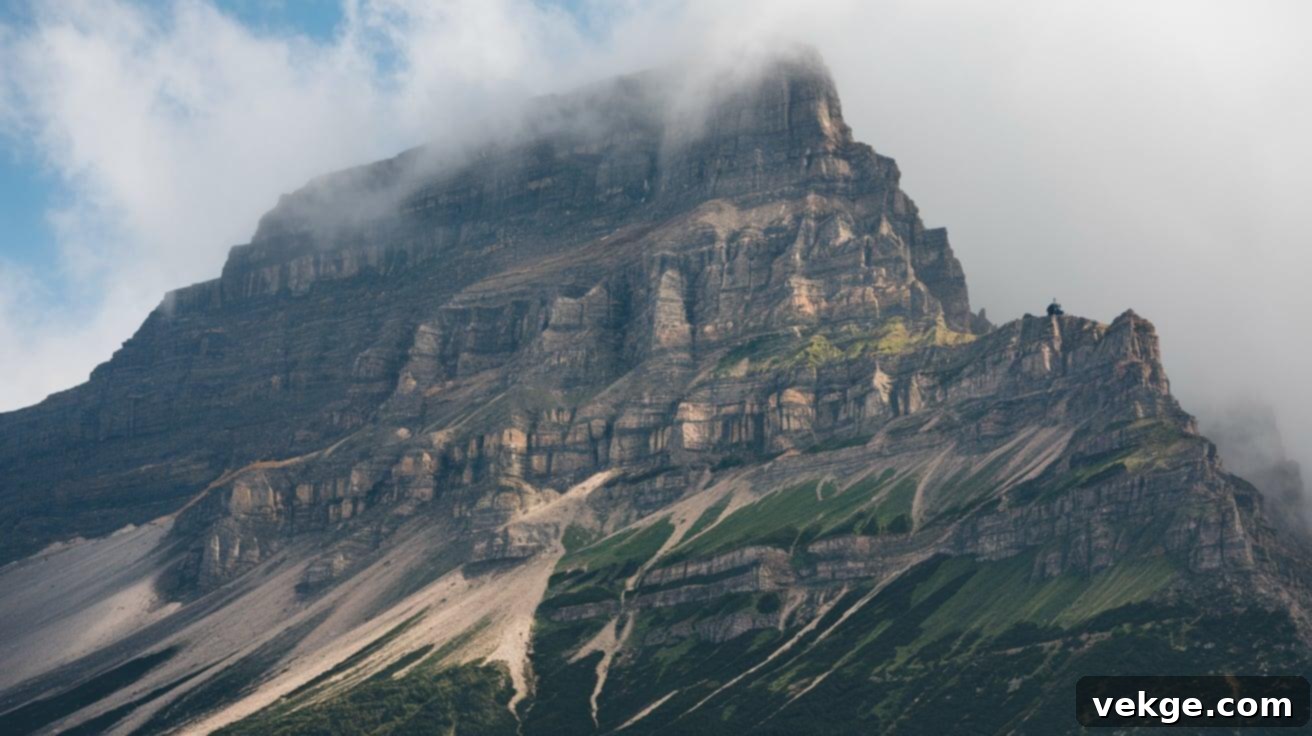
-
Importance: Mount Roraima stands as an ancient, awe-inspiring table mountain (tepui) that has fascinated explorers and writers for centuries. This geological marvel forms a natural triple border between Venezuela, Brazil, and Guyana, rising dramatically from the surrounding plains. Its unique, isolated ecosystem is a living laboratory, hosting an incredible array of endemic plant and animal species found nowhere else on Earth. The otherworldly landscapes of its summit famously inspired Sir Arthur Conan Doyle’s classic novel, “The Lost World,” cementing its status as a legendary destination for adventurers.
-
When to Go: The dry season, spanning from December through April, offers the safest and most favorable conditions for trekking Mount Roraima. During these months, rainfall is minimal, making trails less muddy and rivers easier to cross. It is highly advisable to avoid the peak rainy months of May to August, when conditions can become extremely challenging and even dangerous due to heavy downpours and swollen rivers.
-
Permits: Entry into the national park surrounding Mount Roraima requires specific fees. Furthermore, securing the services of a legally required guide is essential for any expedition. These guides are typically arranged through established tour operators based in Santa Elena de Uairén, the gateway town for Roraima treks. Respect for indigenous territories and environmental regulations is paramount.
-
Safety Tips: Weather conditions on Mount Roraima’s summit can change with startling rapidity, shifting from clear skies to dense fog and rain in moments. Hikers must pack warm clothing, comprehensive rain gear, and sturdy, waterproof hiking boots. While the trek is physically demanding and long, covering varied terrain, it does not require technical climbing skills, making it accessible to fit and prepared hikers.
3. Catatumbo Lightning (Relámpago del Catatumbo)
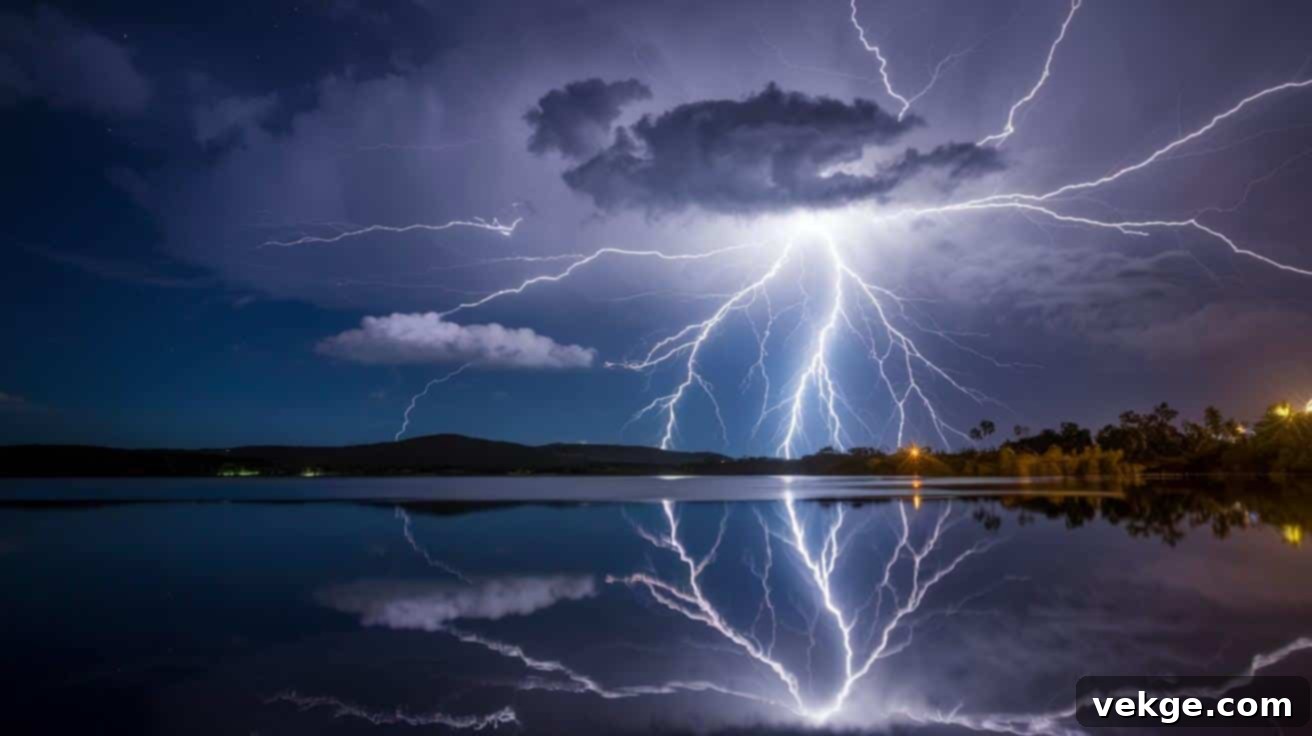
-
Importance: The Catatumbo Lightning is a truly unique atmospheric phenomenon, an unparalleled spectacle of nature. Occurring where the Catatumbo River flows into Lake Maracaibo, this natural light show produces lightning storms for an astonishing 140-160 nights per year. During peak activity, up to 280 lightning strikes per hour illuminate the night sky, with flashes visible from as far as 400 km away. This continuous electrical storm is a subject of intense scientific study and a captivating sight for anyone lucky enough to witness it, earning it the title of the “eternal storm.”
-
When to Go: The most consistent and intense lightning activity typically occurs from September to October, offering the best chances for a spectacular viewing experience. While the phenomenon is frequent, it’s worth noting that the lightning can sometimes pause or significantly diminish during strong El Niño years, so checking current conditions before planning your visit is advisable.
-
Permits: No special permits are officially required to observe the Catatumbo Lightning. However, visiting the area with knowledgeable local guides is absolutely essential. Their expertise ensures both your safety and efficient navigation through the intricate waterways and remote viewing spots, maximizing your chances of witnessing this incredible natural wonder.
-
Safety Tips: When viewing the lightning, it’s crucial to remain on your designated boat or within established viewing areas. The lake area is known for high insect activity, particularly mosquitoes, so bringing robust mosquito protection is vital. Always book your tour with established and reputable operators who prioritize safety and have deep experience with the local environment.
4. Canaima National Park
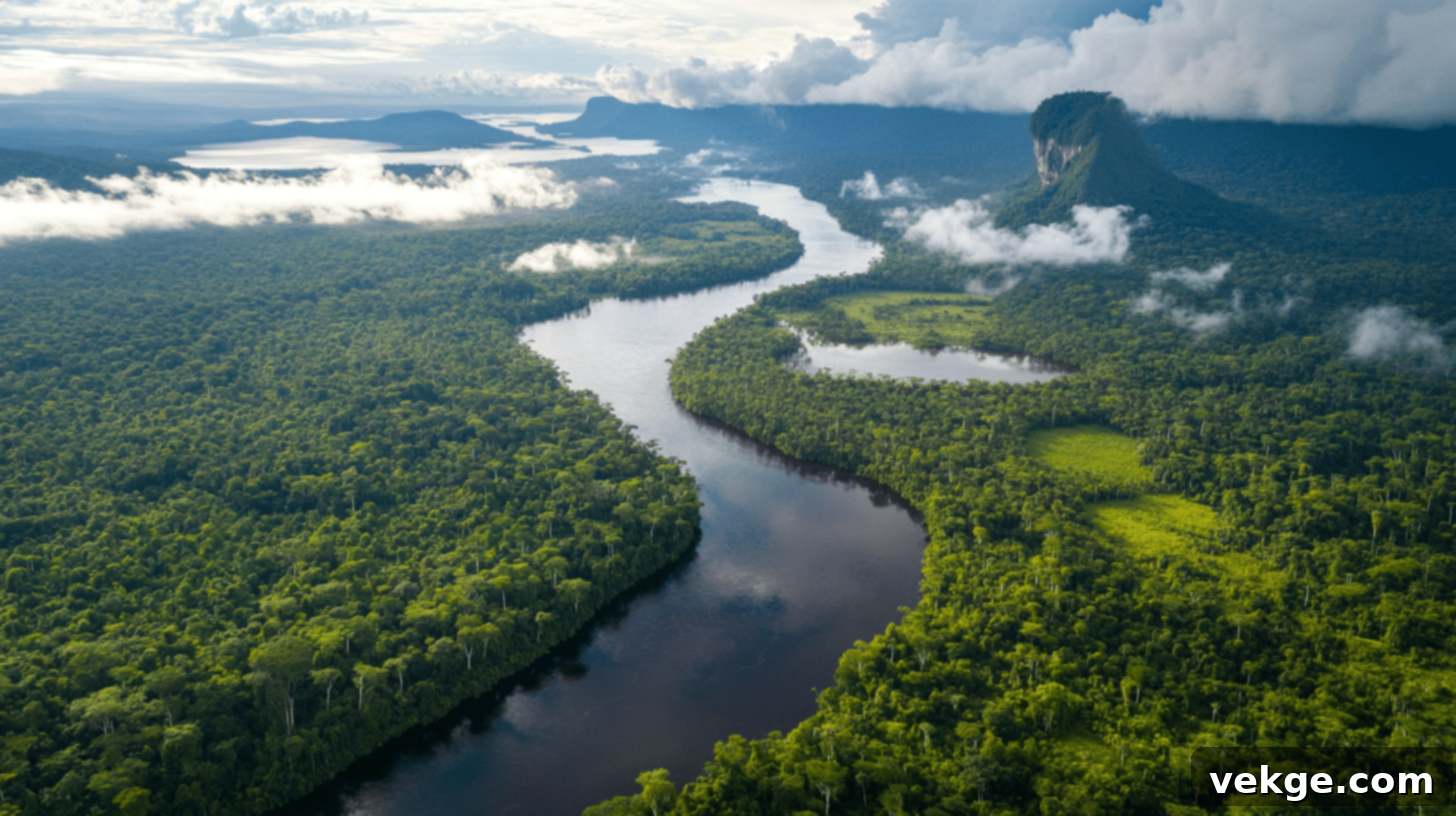
-
Importance: Canaima National Park, a sprawling UNESCO World Heritage site, encompasses an astounding 30,000 square kilometers in southeastern Venezuela. This ancient landscape is a sanctuary of unparalleled beauty, home to countless majestic waterfalls, iconic tepuis (table mountains), and an extraordinary level of biodiversity. Representing one of Earth’s oldest geological formations, with rocks dating back billions of years, the park offers a profound connection to primeval natural history. It is the gateway to Angel Falls and a tapestry of natural wonders waiting to be explored.
-
When to Go: While most areas of Canaima are generally more accessible during the dry season (December-April) due to clearer paths and calmer river conditions, the park’s waterfalls, including Angel Falls, are far more impressive and powerful during the wet season (May-November). Travelers should weigh their priorities: easier travel versus more spectacular waterfall displays.
-
Permits: Entry permits are required for Canaima National Park, and these are typically arranged as part of your tour package through authorized operators. In certain areas, particularly those managed by indigenous communities, additional community fees may apply. These fees contribute to the conservation efforts and well-being of the local Pemón people.
-
Safety Tips: Always follow the instructions of your authorized guides, who possess invaluable knowledge of the terrain and local customs. Protect yourself against the intense sun and pervasive insects with appropriate gear and repellents. Carrying methods for water purification is recommended, and it is crucial to respect indigenous territories and customs, ensuring a harmonious and sustainable visit.
5. Morrocoy National Park
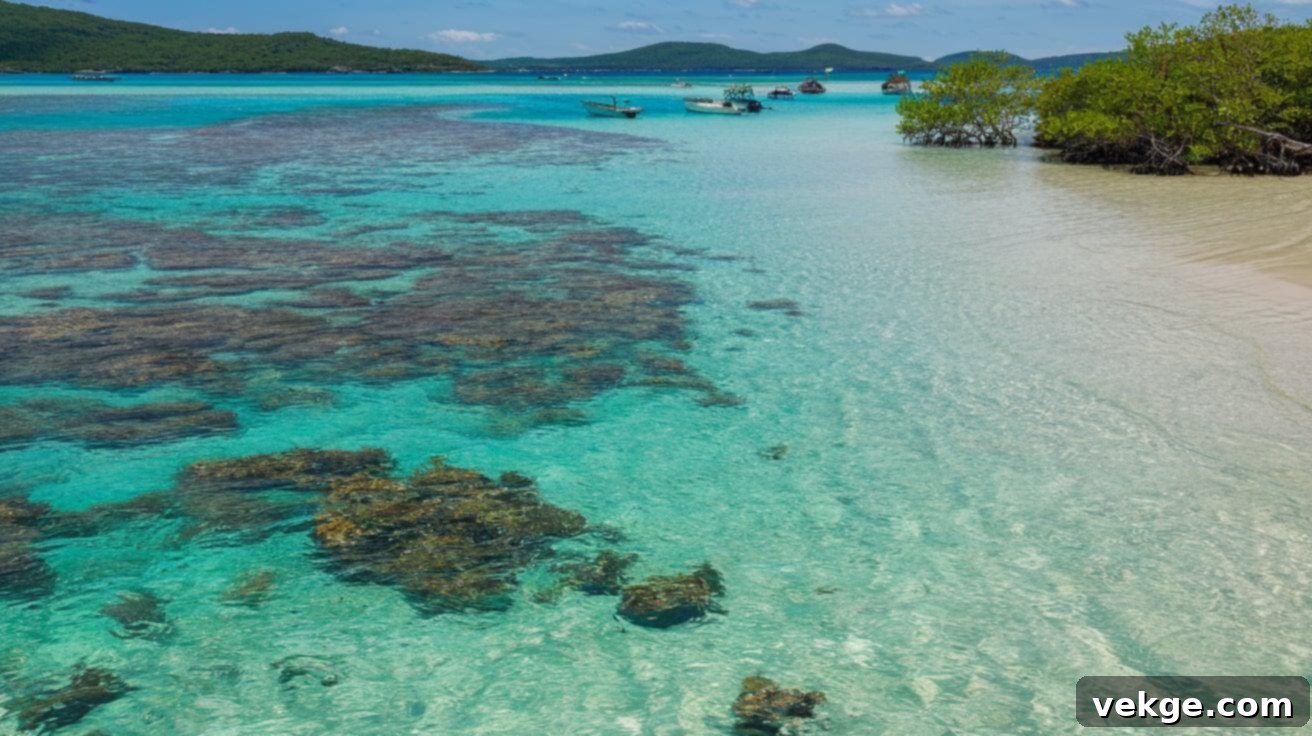
-
Importance: Morrocoy National Park is a quintessential coastal paradise located along Venezuela’s Caribbean coast. It is celebrated for its breathtakingly crystal-clear waters, vibrant coral reefs, intricate mangrove forests, and an abundance of pristine white-sand cays and islets. This protected marine area serves as a critical habitat for a diverse array of marine life, including several species of sea turtles, making it a vital sanctuary for biodiversity and a dream destination for snorkelers, divers, and beach lovers.
-
When to Go: The period from January through April typically offers the calmest seas and minimal rainfall, providing ideal conditions for enjoying the beaches and water activities. It’s strongly advised to avoid Easter Week (Semana Santa) and major national holidays, as the park becomes exceptionally crowded with local tourists, diminishing the serene experience.
-
Permits: A small entrance fee is payable at the park’s control points upon arrival. For general visits and enjoyment of the beaches and cays, no special licenses or complex permits are needed, making it relatively straightforward to access and explore this beautiful national park.
-
Safety Tips: To protect the delicate marine ecosystem, always use reef-safe sunscreen. Remain vigilant for boat traffic, especially when swimming or snorkeling. Bring plenty of drinking water, as facilities on many cays are limited. Crucially, never touch or stand on coral formations, as they are fragile and essential to the marine environment. Be mindful of sea urchins, particularly in shallow waters, and wear appropriate footwear.
6. Coro and its Port (Coro y su Puerto)
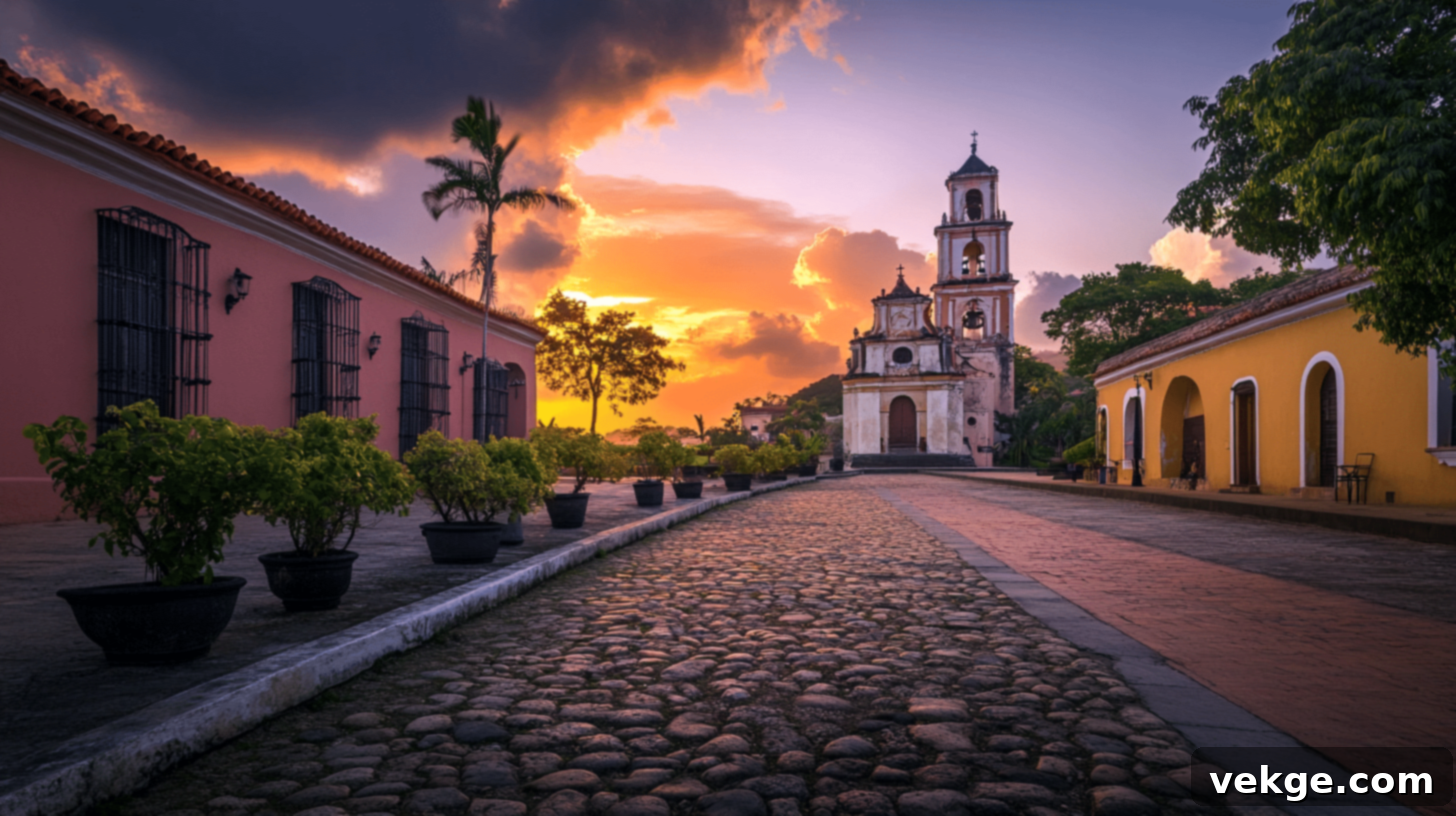
-
Importance: Declared Venezuela’s first UNESCO World Heritage site, Coro and its nearby port, La Vela de Coro, offer a remarkable journey back in time. The meticulously preserved colonial town boasts over 600 historic buildings, showcasing a truly unique mud architecture. This distinctive style is a fascinating blend of Spanish, Dutch, and indigenous building techniques, reflecting centuries of cultural exchange and the city’s strategic importance during the colonial era. It’s a living testament to early colonial urban planning and architectural innovation.
-
When to Go: The dry season, from December to April, is the most comfortable time to visit Coro, with pleasant temperatures for exploring the historic streets on foot. January and February are particularly engaging months, as the city often hosts cultural festivals that celebrate its rich heritage, offering visitors an even deeper immersion into local traditions and history.
-
Permits: No special permits are required for general exploration of Coro’s historic center. While wandering the streets is free, some specific historic buildings, museums, or cultural sites may charge small entrance fees, which contribute to their upkeep and preservation.
-
Safety Tips: As with any urban area, it’s advisable to stay in well-traveled and well-lit areas, especially after dark. The historic quarter can be sunny with limited shade, so bring a hat, sunglasses, and plenty of water. For transportation, it’s always best to use official taxis or reputable ride-sharing services to ensure safety and fair pricing.
7. Guácharo Cave (Cueva del Guácharo)
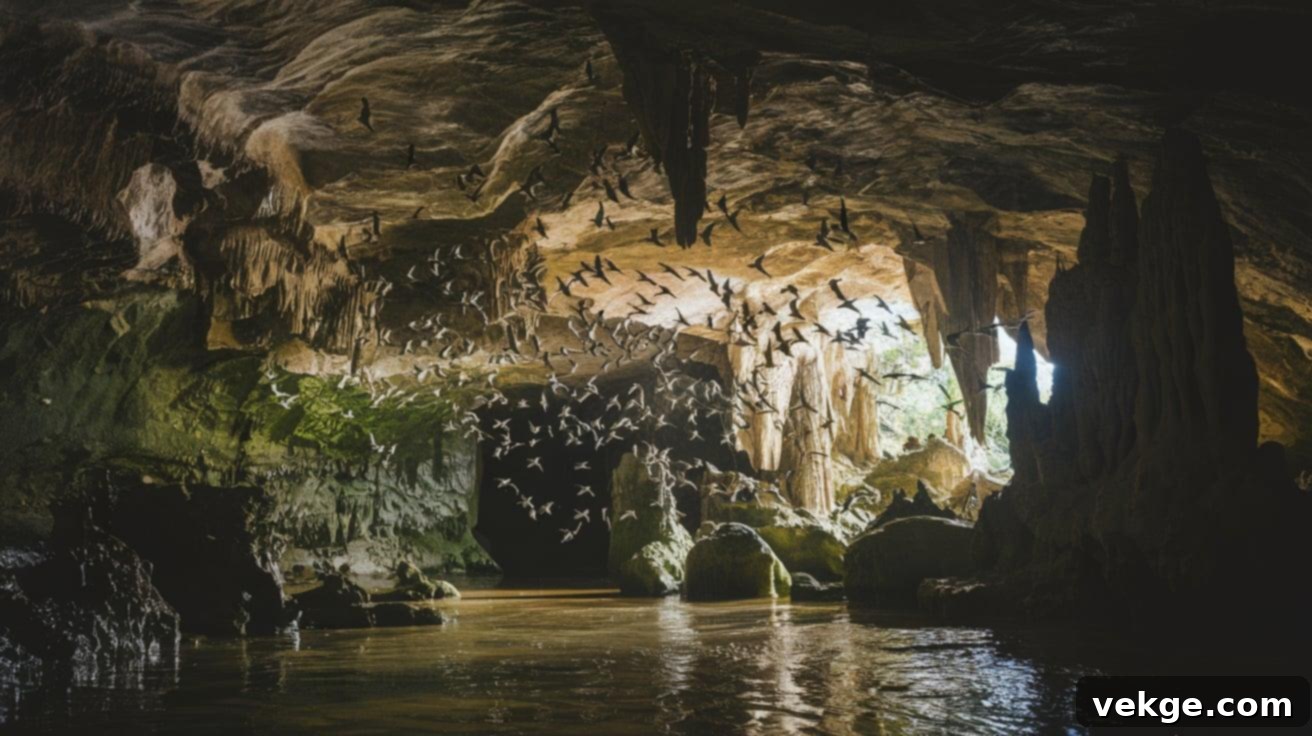
-
Importance: Guácharo Cave, officially known as Cueva del Guácharo National Park, represents one of Venezuela’s most significant and spectacular cave systems. It is renowned as the primary habitat for thousands of oilbirds, or guácharos (Steatornis caripensis), unique nocturnal birds that navigate using echolocation, much like bats. These fascinating creatures, and the cave itself, have inspired countless indigenous legends and continue to be a subject of biological wonder, attracting scientists and curious visitors alike to its depths.
-
When to Go: The cave is accessible throughout the year, as its internal temperature and conditions remain remarkably consistent regardless of the season outside. Visiting in the mornings often provides a more tranquil experience with fewer visitors, allowing for a more intimate encounter with this natural marvel.
-
Permits: A national park entrance fee is required to access Guácharo Cave. For the general public, only the first kilometer of the vast cave system is open for exploration, offering a significant but limited experience. Access to deeper sections requires special scientific permits, reflecting conservation efforts to protect the delicate cave ecosystem and its unique inhabitants.
-
Safety Tips: The cave’s interior surfaces can be damp and slippery, so wearing non-slip shoes with good traction is essential. A light jacket is recommended due to the consistently cool temperatures inside. It is imperative to follow all instructions provided by your guide carefully. To protect the sensitive oilbirds, photography with flash is strictly prohibited, ensuring their undisturbed existence.
8. Los Roques Archipelago National Park

-
Importance: Los Roques Archipelago is a stunning national park comprising over 350 islands, cays, and reefs, making it Venezuela’s largest marine park. This idyllic destination is globally recognized for its pristine white-sand beaches, unbelievably clear turquoise waters, and exceptional marine biodiversity. It is a world-class destination for diving, snorkeling, kiteboarding, and simply relaxing in unparalleled natural beauty, boasting some of the most vibrant coral reefs in the Caribbean.
-
When to Go: The period from November to May typically offers the most optimal weather conditions, characterized by stable sunny days and calm seas, perfect for all types of water activities. Interestingly, Los Roques receives significantly less rainfall than mainland Venezuela, even during the “wet season,” making it a viable option almost year-round, though the dry season is preferred for consistent sunshine.
-
Permits: A national park fee is payable upon arrival at Los Roques, which contributes to the conservation and maintenance of this delicate ecosystem. For specific activities like fishing, additional licenses are needed to ensure sustainable practices and protect marine populations.
-
Safety Tips: ATM access in Los Roques is extremely limited, so it’s crucial to bring sufficient cash for your stay. Pack high-SPF sunscreen, a wide-brimmed hat, and only use reef-safe products to minimize environmental impact. Given the limited accommodation options, especially in the main village of Gran Roque, arranging your lodging well in advance is highly recommended.
9. El Ávila National Park (Waraira Repano)
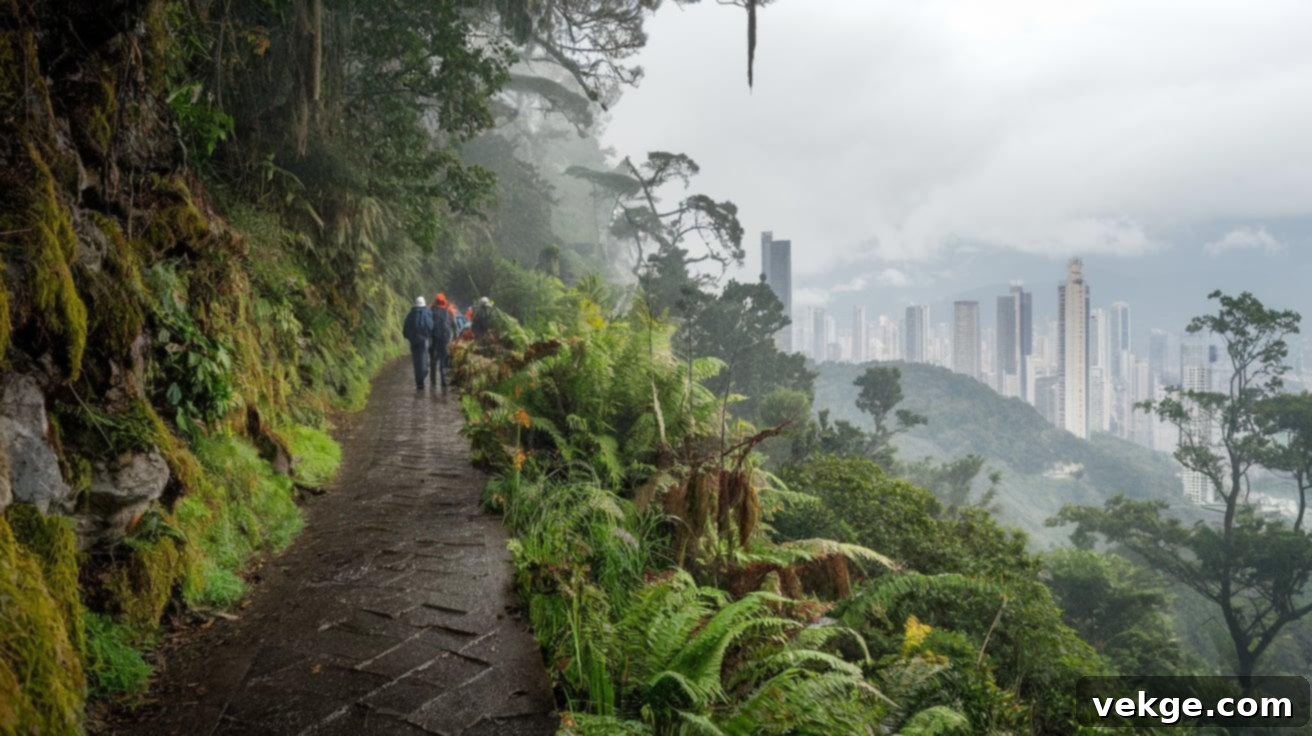
-
Importance: El Ávila National Park, also known by its indigenous name Waraira Repano, is a majestic mountain range that forms a natural, verdant barrier between Venezuela’s bustling capital, Caracas, and the serene Caribbean coast. Its incredible accessibility from the city makes it the most visited national park in Venezuela. It offers a diverse ecosystem ranging from humid cloud forests to arid savannas, crisscrossed by countless hiking trails, providing Caracas residents and visitors alike with a vital escape into nature, breathtaking views, and a cooler climate.
-
When to Go: The park is accessible and enjoyable throughout the year. However, December often offers particularly clear views from the summit, making it an excellent time for photography and panoramic vistas. Weekdays are significantly less crowded than weekends, offering a more peaceful hiking experience. The cool mountain air provides a welcome respite from the city’s heat.
-
Permits: A small entrance fee is typically charged at the main entry points and cable car station. While casual day hikes do not require extensive permits, special permissions are needed for overnight camping within the park or for accessing specific restricted areas, ensuring conservation and safety.
-
Safety Tips: For your safety, always stay on marked trails and, if possible, hike in groups, especially on longer or less-traveled routes. Bring significantly more water than you anticipate needing, as dehydration can be a risk, particularly on uphill climbs. For more challenging or extended routes, consider hiring experienced local guides who know the terrain and can provide valuable insights.
10. Lake Maracaibo
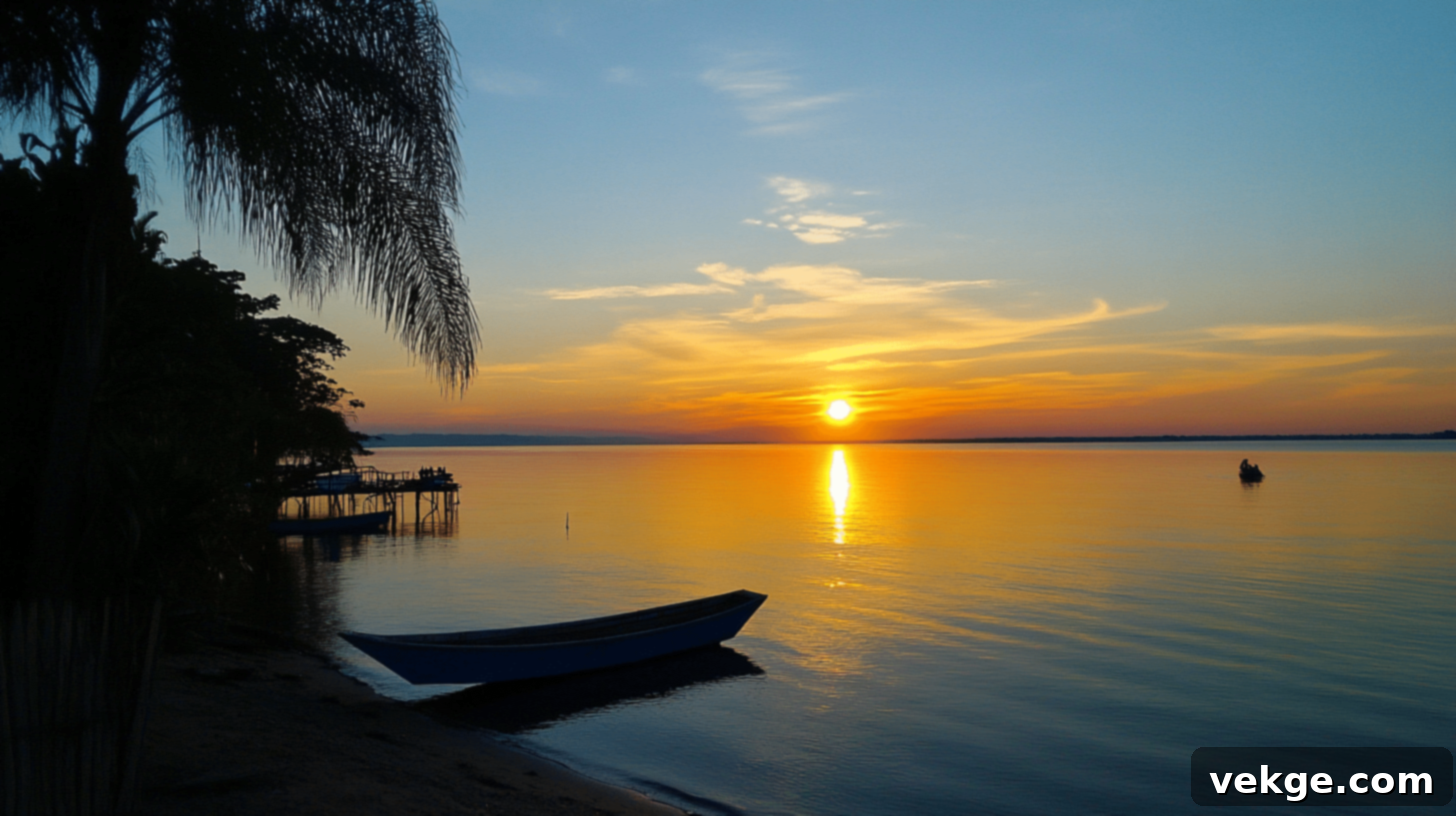
-
Importance: Lake Maracaibo holds the distinction of being the largest lake in South America and one of the oldest lakes on Earth, with geological origins dating back an incredible 20 to 36 million years. Despite its common classification as a lake, its deep connection to the Gulf of Venezuela through a narrow strait means it is technically considered a large tidal bay or estuary. This vast body of water is not only an ecological marvel but also an economically significant region for Venezuela, particularly known for its oil production and as the site of the unique Catatumbo Lightning phenomenon.
-
When to Go: The dry season, typically from December to April, offers more comfortable and predictable conditions for exploring Lake Maracaibo and its surrounding areas. During these months, there is less rainfall, which can make boat tours and land-based excursions more enjoyable and less prone to weather disruptions.
-
Permits: No special permits are required for general viewing or casual activities around Lake Maracaibo. However, if you plan to undertake boat tours, particularly those venturing into more remote areas or specifically to witness the Catatumbo Lightning, tour operators may require registration with local authorities to ensure safety and compliance.
-
Safety Tips: When participating in any boat tours on the lake, ensure you use reputable and officially licensed boat operators. Exercise caution in the urban areas surrounding the lake, as with any major city. It’s always a good practice to check current travel advisories for specific regions around Lake Maracaibo before your visit to stay informed about local conditions and recommendations.
Treasures of Venezuela That Are Hidden
11. Sima Humboldt
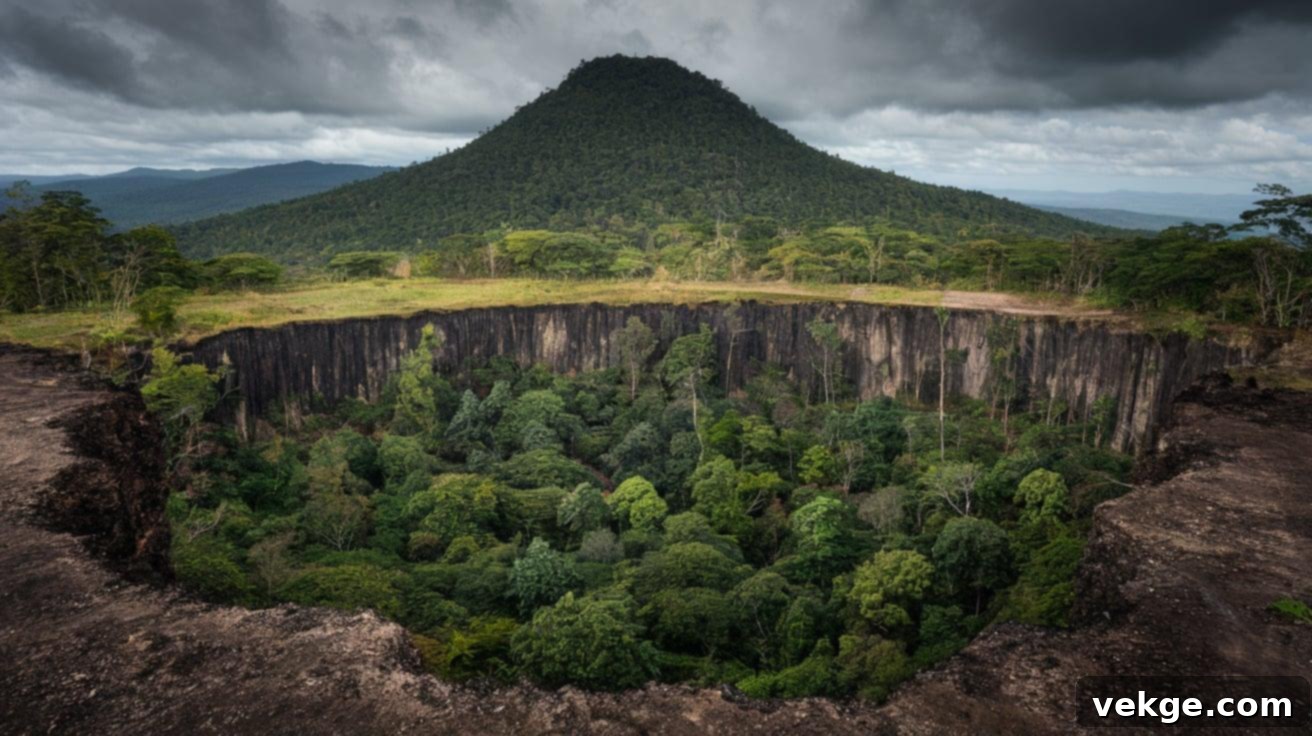
-
Importance: Sima Humboldt is an astonishing geological feature: a massive, perfectly circular sinkhole plunging approximately 1,000 feet (300 meters) deep and spanning an equal width, located on the remote Sarisariñama tepui. This colossal natural shaft houses an almost entirely isolated mini-ecosystem at its base. Scientists are particularly fascinated by its unique flora and fauna, which have evolved separately from the surrounding jungle, offering an unparalleled opportunity to study evolutionary biology and endemic species in a truly secluded environment.
-
When to Go: Due to its extreme remoteness and challenging access, the dry season, spanning from December to April, offers the only realistic window for expeditions to Sima Humboldt. During these months, helicopter flights, which are the primary means of access, are safer and more reliable, and ground conditions are less treacherous.
-
Permits: Sima Humboldt is not open to general tourism. Access requires highly specialized scientific or expedition permits issued by INPARQUES (the Venezuelan national park authority) and other governmental scientific bodies. Regular tourists cannot visit without being part of a sanctioned scientific expedition, emphasizing its protected and fragile nature.
-
Safety Tips: Any attempt to visit Sima Humboldt should only be undertaken with highly experienced expedition companies specializing in remote and extreme environments. Comprehensive medical evacuation insurance is absolutely essential due to the extreme remoteness and lack of any immediate medical facilities. Preparedness for self-sufficiency and severe conditions is paramount.
12. Sima Martel
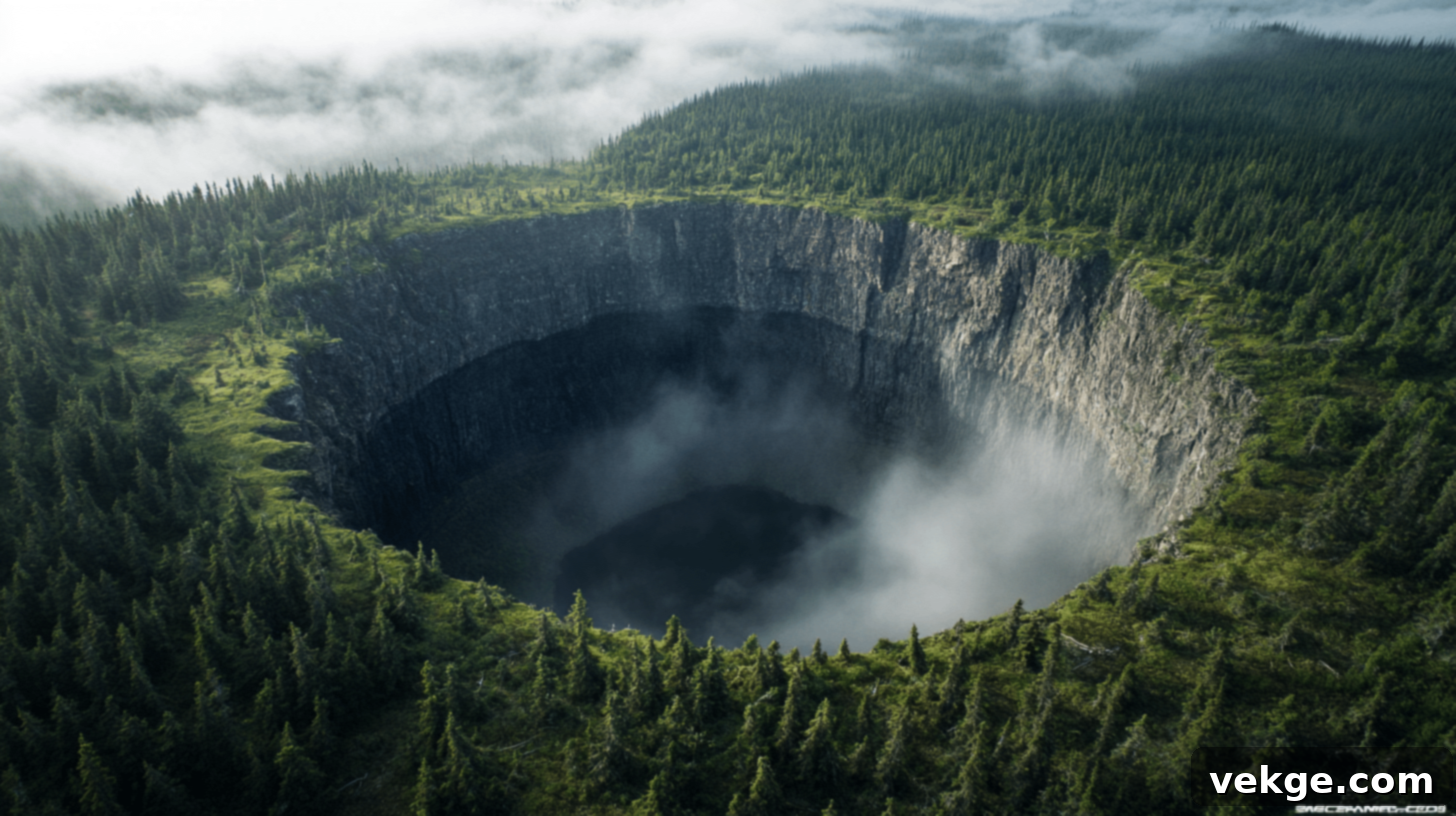
-
Importance: Sima Martel is a companion sinkhole to the more famous Sima Humboldt, located on the same enigmatic Sarisariñama tepui. While slightly smaller in scale, it is equally impressive and contributes significantly to the scientific understanding of these unique geological formations. The existence of these paired sinkholes challenges scientists as they study their origins and the distinct, isolated ecologies that thrive within each, making them critical sites for geological and biological research.
-
When to Go: Similar to Sima Humboldt, the dry season (December-April) provides the safest and most feasible conditions for accessing Sima Martel, primarily via helicopter. Stable weather during these months is crucial for safe air travel and any ground operations on the tepui summit.
-
Permits: Access to Sima Martel is highly restricted and requires special permission from Venezuelan scientific authorities and the national park administration. It is strictly not accessible for casual tourism, highlighting its status as a site of significant scientific interest and fragile environment.
-
Safety Tips: The extreme remoteness of Sima Martel means that no medical facilities are available within many hours of travel. Therefore, any visit must be conducted with comprehensive expedition support, including advanced first aid capabilities and robust emergency plans. Only highly specialized and prepared groups should consider such an endeavor.
13. Cerro Autana
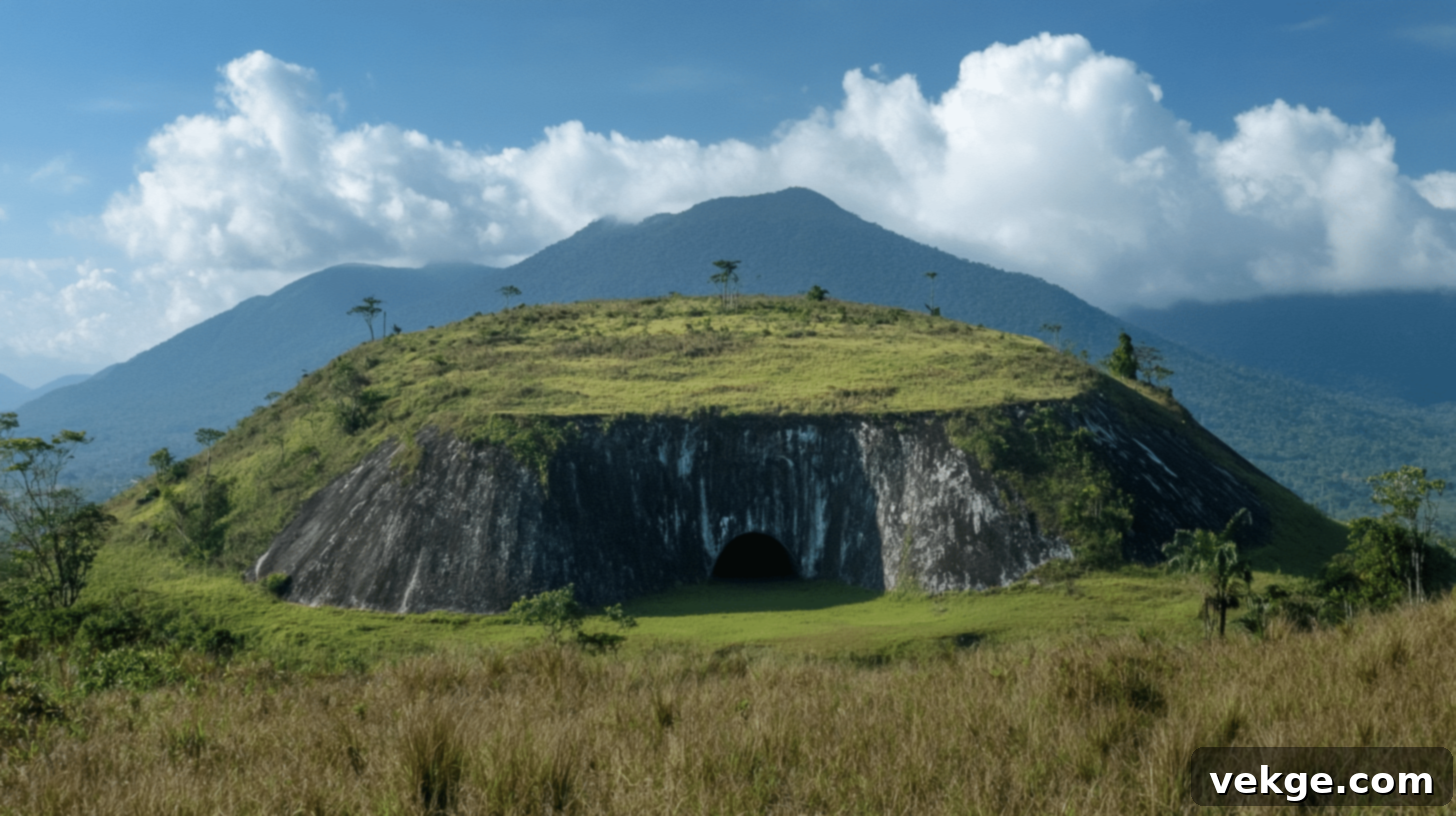
-
Importance: Cerro Autana is not just another tepui; it is a sacred mountain of immense cultural significance to the indigenous Piaroa people, who consider it the “tree of life” and the mythical birthplace of various crops. Geologically, it is famous for featuring a unique natural tunnel that penetrates completely through the mountain, a rare and spectacular formation. This combination of spiritual importance and natural wonder makes Cerro Autana a truly exceptional landmark, revered by both its caretakers and those few who get to witness its majesty.
-
When to Go: The month of December generally offers the driest conditions, which are most favorable for undertaking the demanding trek to Cerro Autana. Reduced rainfall makes river crossings safer and trails more manageable, though the journey remains a significant physical challenge.
-
Permits: Visiting Cerro Autana requires obtaining permissions from both the national park authorities (INPARQUES) and, crucially, from the indigenous communities who control the surrounding territories. Respecting their authority and cultural protocols is an indispensable part of planning any visit.
-
Safety Tips: It is paramount to respect indigenous sites, traditions, and the local inhabitants’ guidance throughout your journey. The trek to Cerro Autana involves difficult and varied terrain, requiring excellent physical condition, proper hiking equipment, and a deep appreciation for the remote wilderness. Always travel with experienced guides.
14. Quebrada de Jaspe (Jasper Creek)
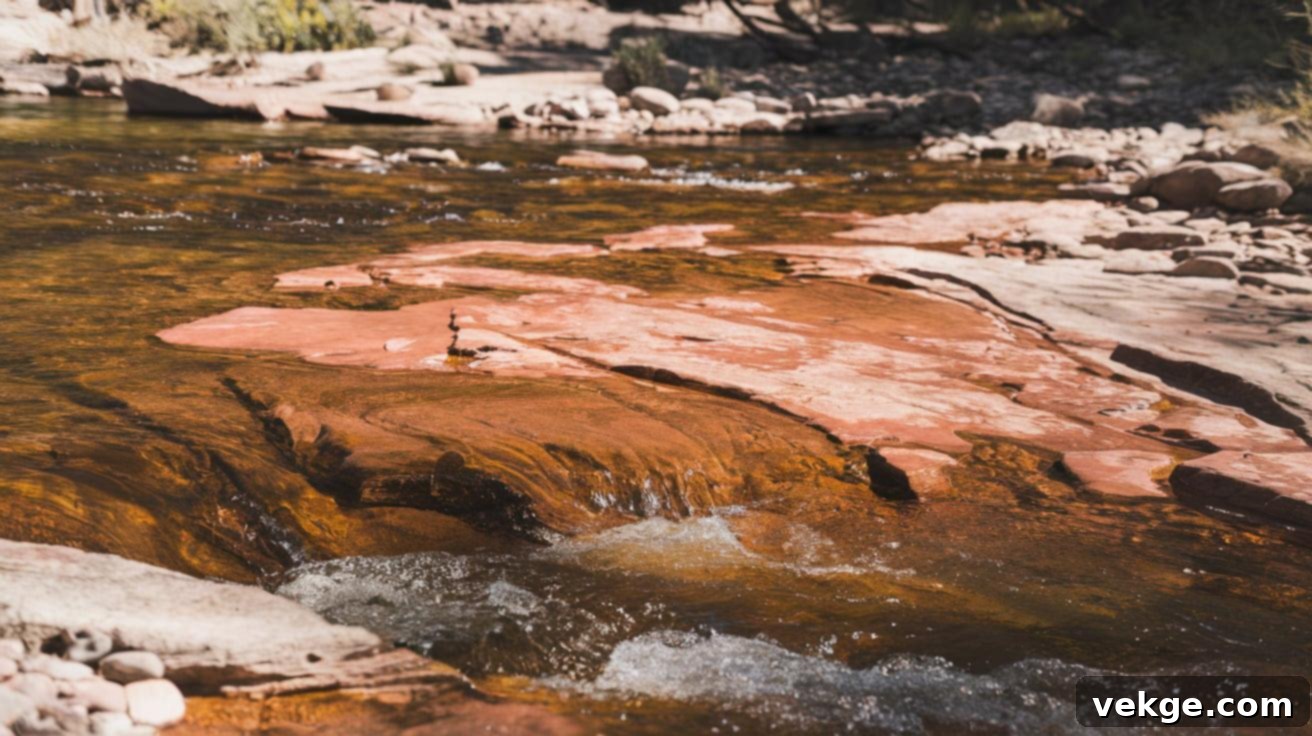
-
Importance: Quebrada de Jaspe, also known as Jasper Creek, is a truly mesmerizing natural wonder located in the La Gran Sabana region. This unique riverbed is made almost entirely of smooth, polished red jasper stone, creating striking patterns and vibrant hues as the crystal-clear water flows over it. The smooth rock formations also naturally sculpt into exhilarating water slides and inviting pools, offering a playful and picturesque experience distinct from Venezuela’s other natural attractions.
-
Permits: Access to Quebrada de Jaspe requires a small fee payable directly to the local Pemón indigenous community, who are the custodians of the site. This fee contributes to their livelihood and efforts in managing and preserving this beautiful area.
-
When to Go: The best time to experience Quebrada de Jaspe is during periods of moderate water flow, typically from June to October. During these months, the red colors of the jasper are most vivid and visible beneath the clear water, without the risk of the creek being dangerously flooded by heavy rains, which can occur during peak wet season.
-
Safety Tips: While the water in Quebrada de Jaspe often appears shallow and gentle, currents can be surprisingly powerful. Wearing water shoes with good grip is absolutely essential to avoid slipping on the incredibly smooth and sometimes slick stone surfaces, especially when exploring or using the natural water slides. Always exercise caution and test the water flow before fully immersing yourself.
15. Kukenaam Falls
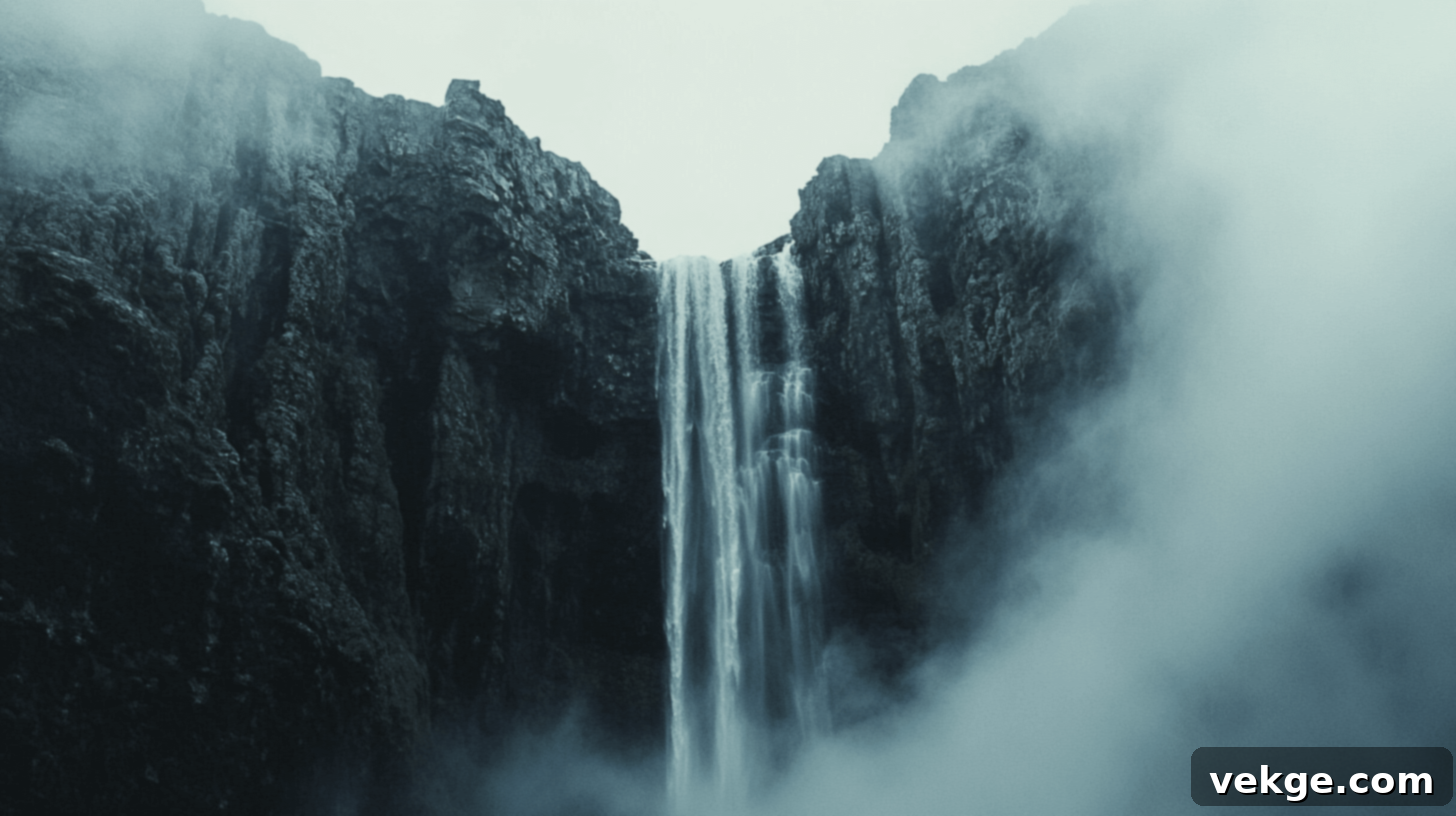
-
Importance: While often overshadowed by the colossal Angel Falls, Kukenaam Falls (also known as Salto Kukenán) is a breathtaking spectacle in its own right, dropping an impressive 674 meters (2,211 feet) from the majestic Kukenaam tepui. Many adventurers and nature connoisseurs consider it equally beautiful, if not more so, for its raw, untouched majesty and the fact that it is far less visited than its famous neighbor. It offers a more secluded and profound connection with the ancient landscapes of the Gran Sabana.
-
When to Go: November typically offers the fullest water flow for Kukenaam Falls, presenting the most powerful and impressive display. However, it’s a trade-off, as this season can also bring consistent cloud cover, which might unfortunately obscure views of the upper reaches of the falls and the tepui itself.
-
Permits: General park fees apply when entering Canaima National Park through its official checkpoints, which is necessary to reach the vicinity of Kukenaam Falls. In certain specific viewing areas or indigenous territories, additional indigenous guide fees may apply, supporting local communities and their role in conservation.
-
Safety Tips: Reaching many of the prime viewpoints for Kukenaam Falls often involves challenging off-road driving or extensive hiking through dense jungle and rugged terrain. It is highly recommended to arrange transportation and guidance with local guides who are intimately familiar with the region and are up-to-date on current road conditions, which can change rapidly with weather.
16. Sapo Falls (Salto Sapo)
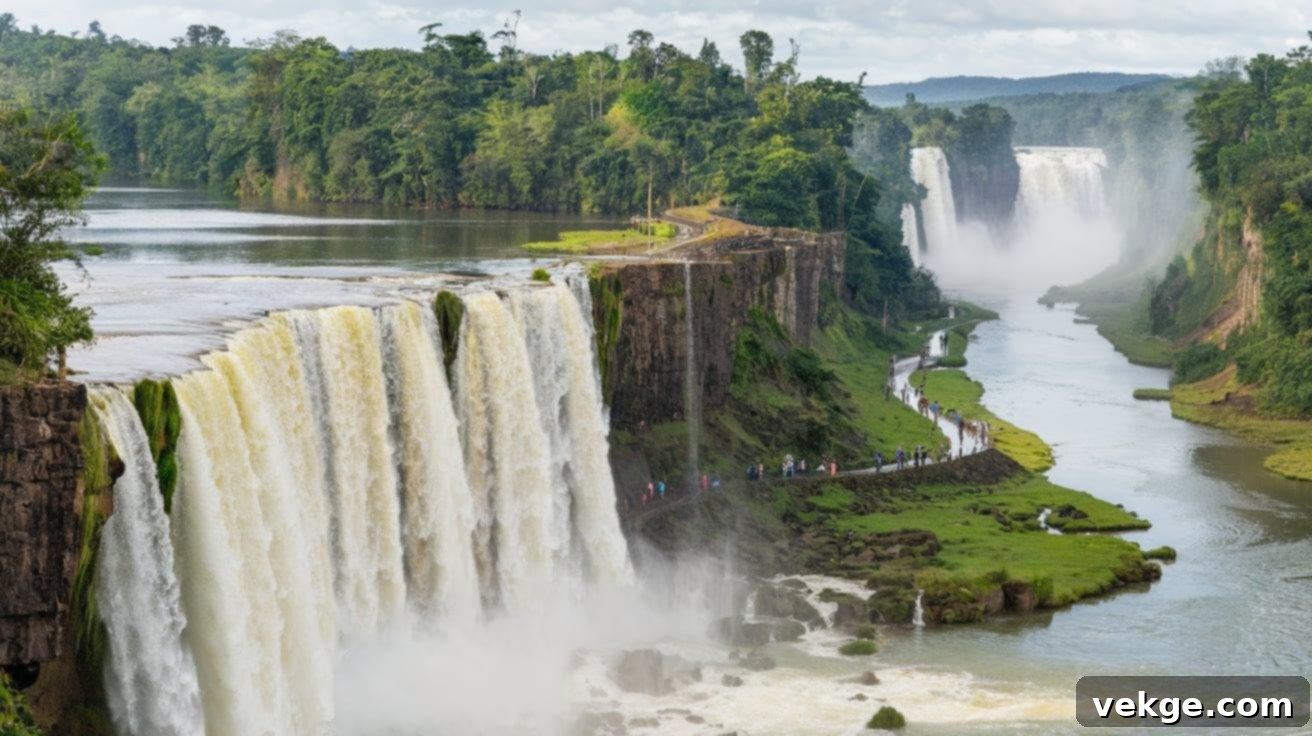
-
Importance: Located within the stunning Canaima Lagoon, Sapo Falls is a magnificent series of wide, powerful waterfalls that offer a truly rare and thrilling experience: the opportunity for visitors to walk directly behind the curtain of water. This immersive interaction with the raw power of nature is an exhilarating and unforgettable highlight, making Sapo Falls an essential part of the quintessential Canaima experience and a favorite among adventurers.
-
When to Go: The wet season, from June to December, provides the most impressive and voluminous water flow at Sapo Falls, enhancing the dramatic effect of walking behind the cascade. However, during the peak flood season, typically July to August, water levels can become exceptionally high, and access to walk behind the falls may be restricted for safety reasons.
-
Permits: Access to Sapo Falls is generally included within the overall Canaima National Park entry fee, which is typically arranged and covered through the tour operators that manage your Canaima visit. No additional, separate permits are usually needed for this specific attraction.
-
Safety Tips: The rocks and pathways behind Sapo Falls become extremely slippery due to the constant spray and dampness. It is absolutely crucial to follow your guide’s instructions carefully and wear appropriate footwear with excellent grip, such as sturdy water shoes or sandals with good soles. Waterproof protection for cameras, phones, and other valuables is also essential to prevent water damage.
17. Cueva del Fantasma (Ghost Cave)
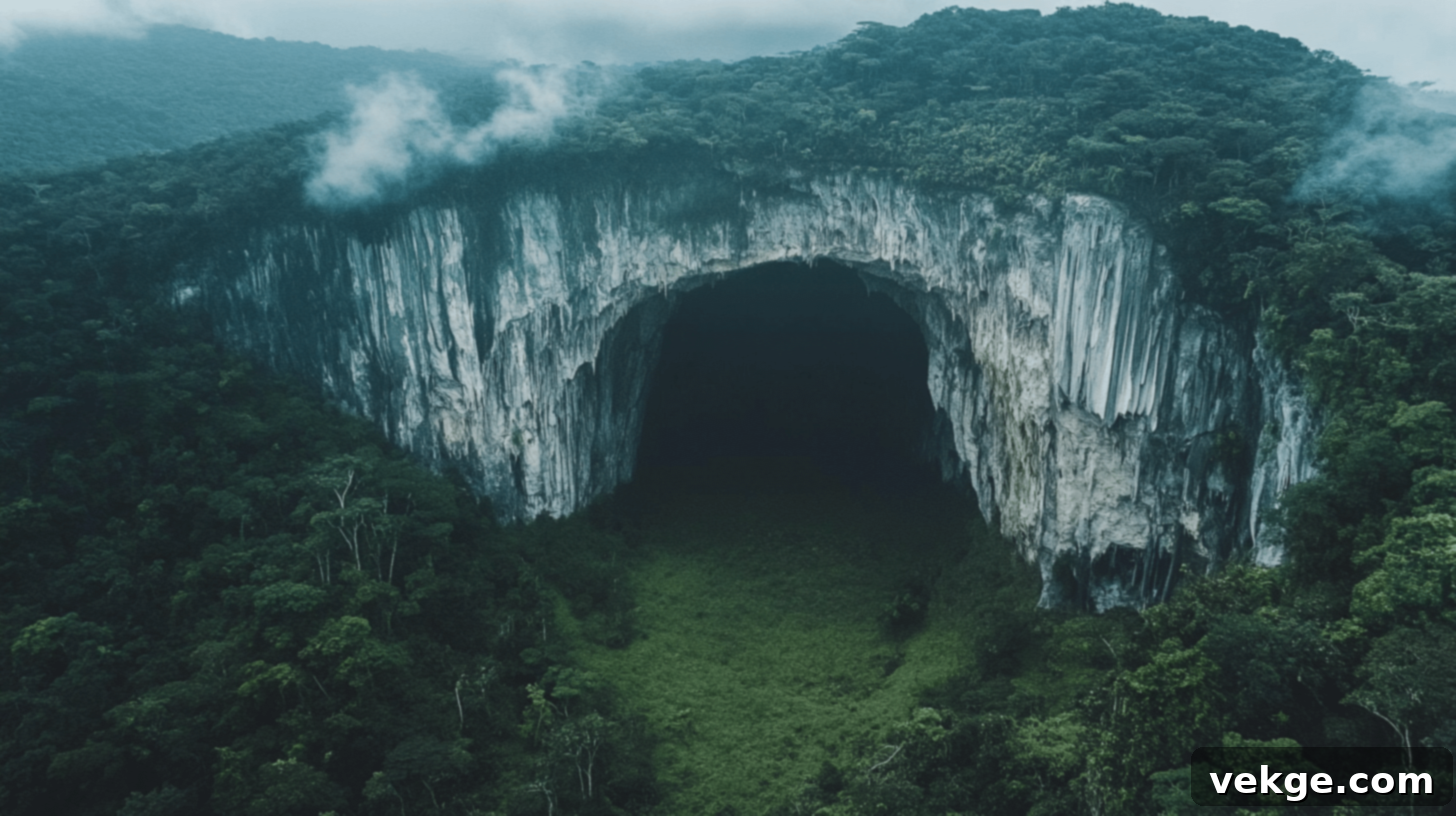
-
Importance: Cueva del Fantasma, or “Ghost Cave,” defies the typical cave experience with its gargantuan proportions. This massive geological formation is so immense that helicopters can comfortably fly inside, a testament to its incredible scale. Within its vast interior, the cave harbors its own unique microclimate, fostering distinctive vegetation and wildlife that have adapted to this isolated world. It’s a breathtaking example of an entirely enclosed, yet open-to-the-sky, ecosystem.
-
When to Go: The dry season, from December to April, offers the safest and most stable conditions for the helicopter access required to reach and potentially enter Cueva del Fantasma. Unpredictable weather during the wet season can make flights to this remote region highly risky or impossible.
-
Permits: Access to Cueva del Fantasma is highly restricted and requires specialized scientific or expedition permits from national park authorities and other government agencies. This extraordinary site is not open to general tourism, reflecting its protected status and the logistical challenges of reaching it.
-
Safety Tips: Visits to Cueva del Fantasma should only be attempted as part of well-organized, established scientific expeditions with extensive experience in extreme remote environments. There is absolutely no tourism infrastructure in this isolated region, and emergency evacuation would be extraordinarily difficult and time-consuming, necessitating meticulous planning and self-sufficiency.
18. Sarisariñama Tepui
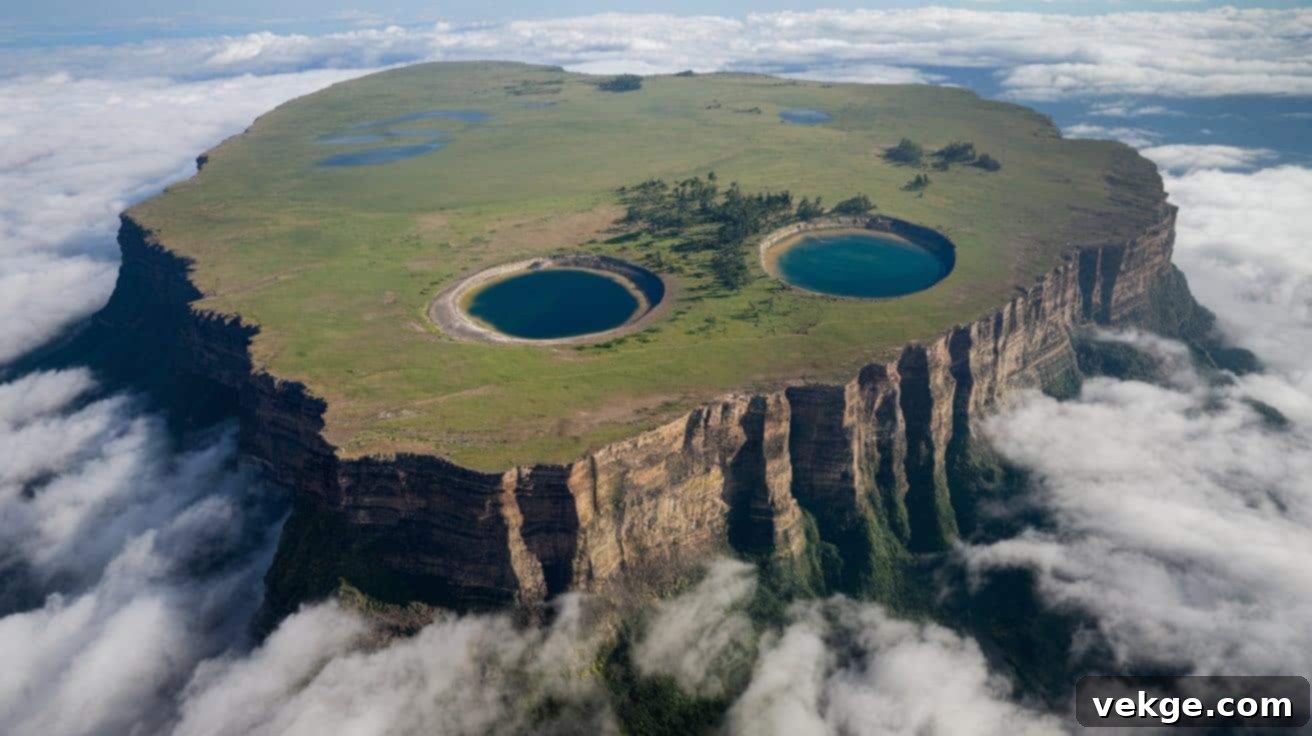
-
Importance: Sarisariñama is an iconic tepui renowned for its distinctive and profound geological features, most notably its multiple, perfectly circular sinkholes, including the famous Simas Humboldt and Martel. The mountain itself is a living testament to Earth’s ancient history, containing some of the planet’s oldest rock formations, dating back an astonishing 1.7 billion years. This remote and largely unexplored tepui offers unparalleled opportunities for scientific research into isolated ecosystems and deep geological processes.
-
When to Go: The dry season, typically from December to April, is crucial for safe helicopter access and stable ground conditions on the tepui’s summit, should a landing be planned. The wet season brings torrential rains and dense cloud cover, making expeditions exceedingly difficult and dangerous.
-
Permits: Access to Sarisariñama is extremely restricted. Special scientific or expedition permits are rarely granted and require rigorous application processes through INPARQUES and various government wildlife and environmental authorities. It is not a destination for general tourism.
-
Safety Tips: There is no tourism infrastructure whatsoever on Sarisariñama. Due to its extreme remoteness, any medical emergency would require complex and potentially life-threatening helicopter evacuation. Visits are only feasible as part of highly specialized, properly equipped expeditions with extensive wilderness experience and comprehensive emergency protocols.
19. Auyantepui
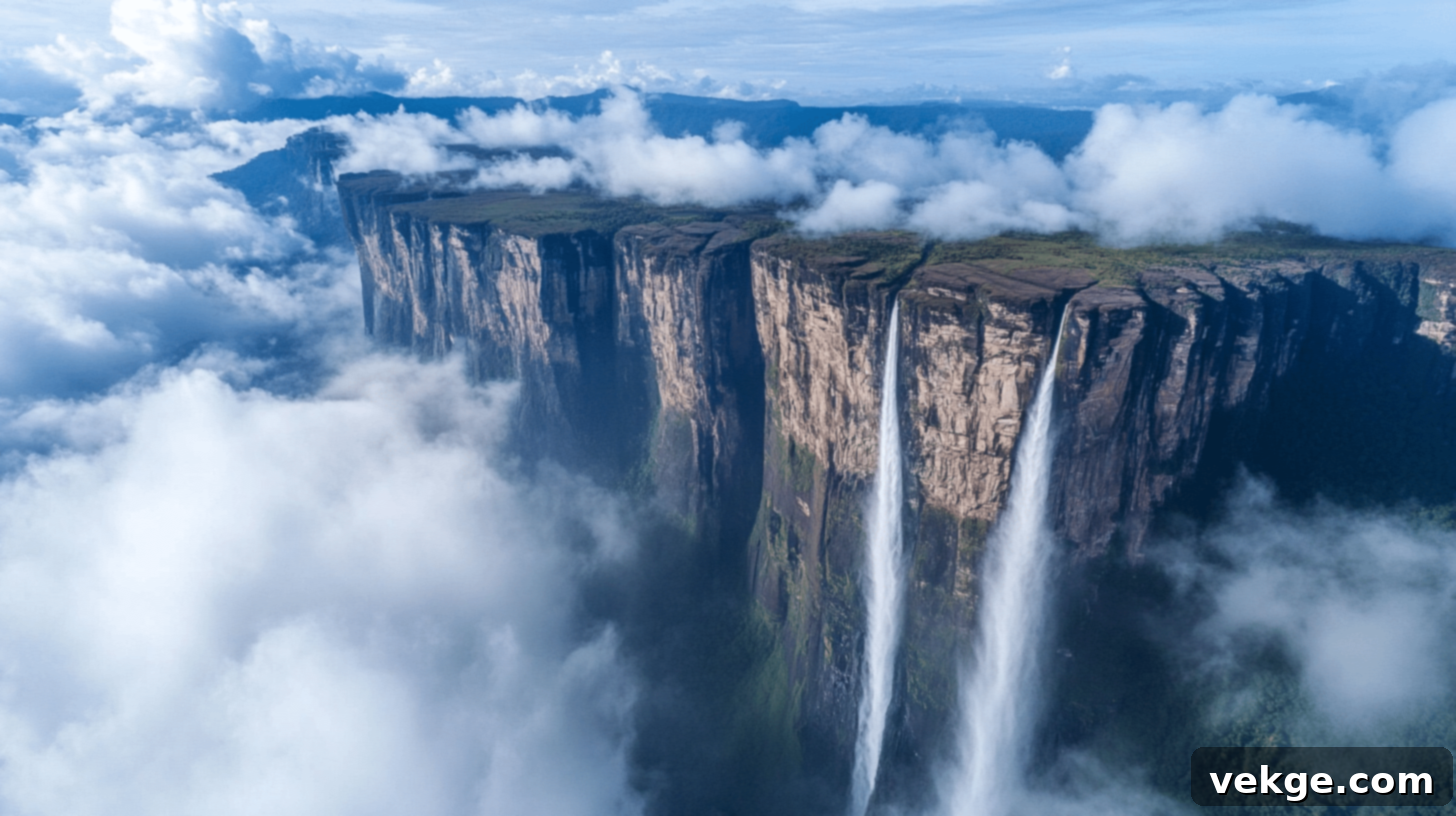
-
Importance: Auyantepui, often called “Devil’s Mountain,” is an immense flat-topped mountain, or tepui, of monumental significance as it is the very origin point of Angel Falls, the world’s tallest waterfall. Its vast, largely unexplored summit spans over 700 square kilometers (270 square miles), a unique and ancient plateau that harbors countless undocumented waterfalls, hidden caves, and unique ecosystems that have evolved in isolation. It is a true lost world, brimming with scientific and exploratory potential.
-
When to Go: The dry season, from December to April, generally provides the safest and most stable conditions for accessing the base of Auyantepui or for any attempted summit expeditions. Clearer skies during this period facilitate flights and reduce the risks associated with trekking in the challenging terrain.
-
Permits: In addition to the standard Canaima National Park entry, special climbing or trekking permits are required for any attempts to ascend Auyantepui. The vast majority of its summit areas are restricted due to their delicate ecology and the inherent dangers of the terrain, making full exploration a privilege reserved for scientific expeditions.
-
Safety Tips: Summit conditions on Auyantepui can be extremely harsh and unpredictable, with sudden and drastic weather changes. Accessing the summit is an endeavor strictly reserved for experienced mountaineers and trekkers equipped with specialized gear and accompanied by highly qualified guides who understand the unique challenges and risks of this particular tepui.
20. La Gran Sabana (The Great Savannah)
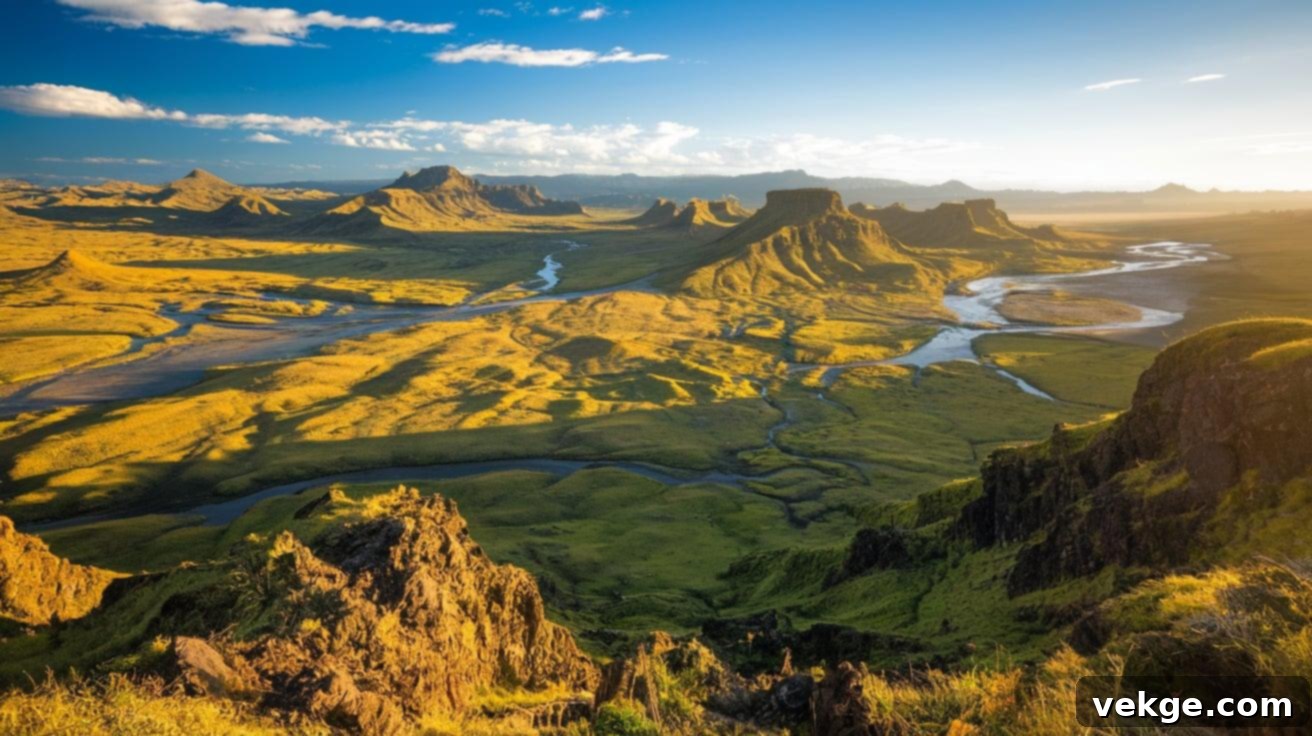
-
Importance: La Gran Sabana is an expansive and breathtaking grassland region located in southeastern Venezuela, characterized by its dramatic landscape dotted with majestic tepuis and numerous cascading waterfalls. This iconic area forms one of Venezuela’s most spectacular and globally recognized natural landscapes, a primeval world that is truly inspiring. Its unique geological formations and vibrant ecosystems famously provided the inspiration for the stunning visuals in Disney-Pixar’s animated film “Up,” solidifying its place in popular culture as a land of wonder.
-
When to Go: La Gran Sabana is a beautiful destination year-round. The dry season (December-April) offers easier road travel conditions, with less mud and more accessible trails. Conversely, the wet season (May-November) transforms the landscape, making the region’s countless waterfalls even more impressive and voluminous, although some roads may become challenging.
-
Permits: General park entry fees are payable at control points upon entering La Gran Sabana region. Additionally, specific attractions or areas managed by indigenous communities may require small community fees, which contribute to the local economy and conservation efforts by the Pemón people.
-
Safety Tips: The open savannah offers very little natural shade, so strong sun protection (hats, sunglasses, high-SPF sunscreen) is essential. Fuel stations are sparse, so always fill up your tank whenever possible. For exploring side roads and more remote areas, a high-clearance vehicle, preferably 4×4, is strongly recommended due to often rugged and unpaved conditions.
21. Aponguao Falls (Chinak-Merú)
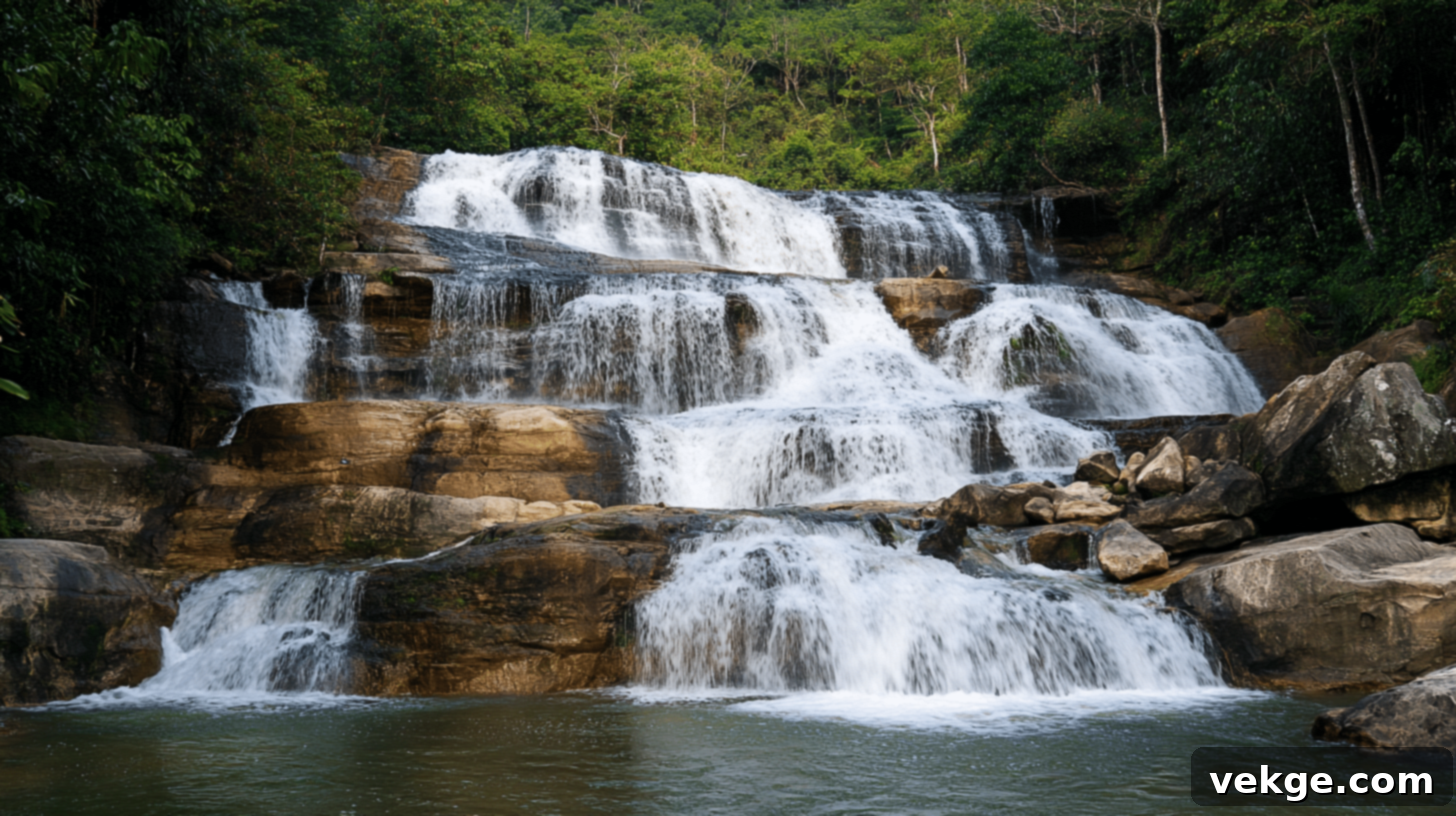
-
Importance: Aponguao Falls, also majestically known as Chinak-Merú in the indigenous Pemón language, is a wide, powerful, and truly spectacular waterfall nestled within the heart of the La Gran Sabana region. Dropping an impressive 106 meters (348 feet) in multiple, roaring cascades, it presents a breathtaking natural display of force and beauty. It stands as one of the most accessible and impressive waterfalls in the Gran Sabana, inviting visitors to witness its raw power.
-
When to Go: For the fullest and most powerful water flow, it’s best to visit Aponguao Falls between May and November, during the wet season. While the falls remain impressive throughout the year, their volume and intensity significantly reduce during the driest months, offering a different, albeit still beautiful, experience.
-
Permits: A small fee is typically payable to the local indigenous community who manage access to the site. This contribution helps support the community and ensures the continued maintenance and preservation of this natural attraction.
-
Safety Tips: The trail leading to Aponguao Falls can become muddy and exceptionally slippery, particularly during the rainy season. Wearing proper, sturdy footwear with good grip is absolutely essential to prevent falls. For safety reasons, swimming is strictly prohibited at the base of the falls due to the presence of dangerous currents and the sheer force of the cascading water.
22. Los Médanos de Coro National Park
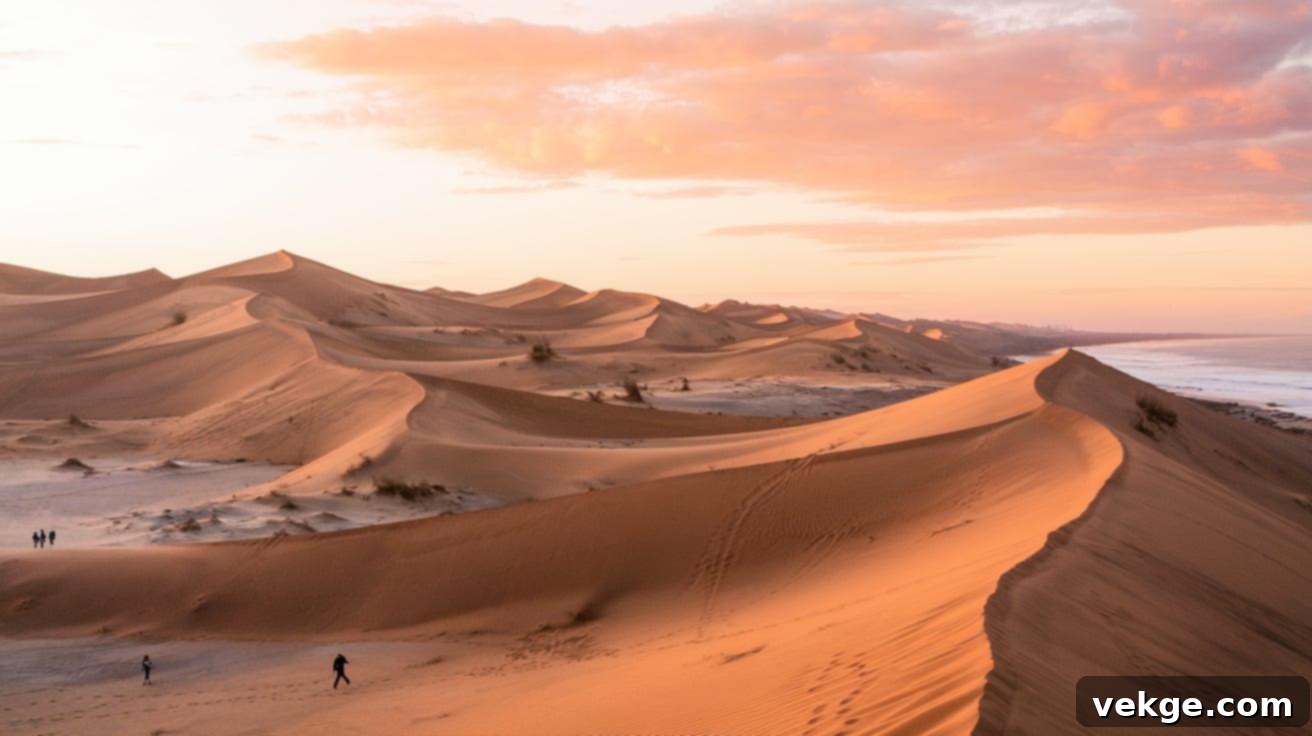
-
Importance: Los Médanos de Coro National Park presents a stunning and unexpected desert landscape right along Venezuela’s Caribbean coast. These vast, shifting coastal desert dunes stretch across approximately 5 square miles (130 square kilometers), with some reaching impressive heights of up to 40 meters (130 feet). This unique geological feature creates a stark and captivating contrast to the nearby azure Caribbean waters and the historic city of Coro, making it a truly distinctive natural landmark.
-
When to Go: The dunes are accessible and visually striking year-round. However, early morning and late afternoon hours are generally the best times to visit. The light during these periods is ideal for photography, and the sand temperatures are considerably cooler, making it more comfortable for walking and exploring the vast landscape.
-
Permits: A small entrance fee is required at the national park control point to access Los Médanos de Coro. This fee contributes to the park’s maintenance and conservation efforts.
-
Safety Tips: The desert environment offers no natural shade, so it’s crucial to bring plenty of water and robust sun protection (hats, sunglasses, sunscreen). Wearing closed shoes is highly recommended, as the sand can become extremely hot, especially during midday. Be aware that at certain times, strong winds can kick up significant sandstorms, which can be disorienting and uncomfortable.
23. Pedernales Mud Volcanoes
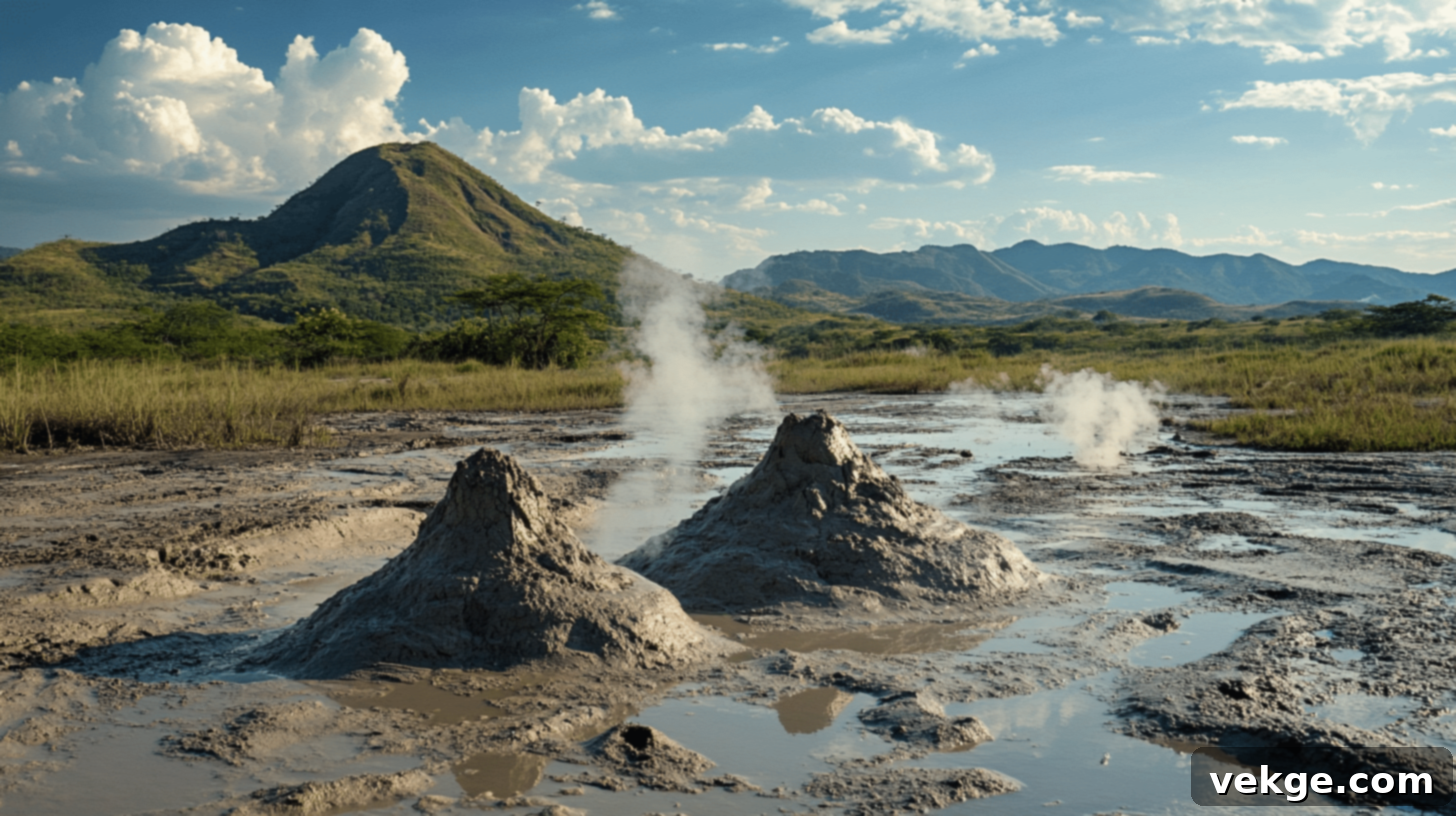
-
Importance: The Pedernales Mud Volcanoes are truly unusual and fascinating geological features. Located in the delta region of Pedernales, these natural formations continuously bubble and gurgle with methane gas and mud, creating small, cone-shaped volcanoes that are constantly changing shape and size. This unique natural phenomenon offers a rare glimpse into subsurface geological activity, presenting an alien-like landscape that is both captivating and scientifically intriguing.
-
When to Go: The dry season, typically from January to April, offers easier access to the Pedernales region and generally less mosquito activity, making for a more comfortable visit to the mud volcanoes. Navigating the intricate delta waterways can be challenging during heavy rains.
-
Permits: No special permits are officially required to visit the Pedernales Mud Volcanoes. However, due to the complex and often labyrinthine delta waterways, engaging experienced local guides is absolutely necessary for safe navigation and to ensure you reach the correct locations.
-
Safety Tips: It is advisable to avoid direct contact with the mud emanating from the volcanoes, as it may contain various minerals or bacteria that could be harmful. The region itself has limited medical facilities, so it’s prudent to carry a basic medical kit with essential supplies. Always follow your guide’s instructions for safety around these active geological sites.
24. Sistema Roraima Sur (Roraima South System)

-
Importance: Sistema Roraima Sur represents a monumental discovery within the already legendary Mount Roraima. Unveiled in 2009, this intricate network is recognized as the world’s longest quartzite cave system, stretching over an astonishing 10.8 kilometers (6.7 miles). Cave explorers continue to map new sections and document unique mineral formations and specialized cave life, making it a site of immense scientific importance for speleology and geology. It offers unparalleled insights into the internal structure of tepuis.
-
When to Go: The dry season, from December to March, provides the safest and most stable trekking conditions to reach Mount Roraima’s summit, which is a prerequisite for accessing the cave system. Wetter months make the approach and internal cave conditions significantly more hazardous.
-
Permits: Beyond the standard Mount Roraima access requirements, exploring Sistema Roraima Sur demands highly specialized scientific or caving permits. Most sections of this delicate and dangerous cave system are strictly closed to regular tourists, reflecting the need for expert knowledge and specialized equipment for safe exploration and preservation.
-
Safety Tips: This cave system is only accessible to highly experienced cavers equipped with professional-grade caving gear and deep expertise in extreme environments. Cave conditions can be incredibly dangerous, featuring slippery surfaces, tight passages, and the risk of sudden flooding. Crucially, no rescue infrastructure exists in this remote location, emphasizing the critical importance of meticulous planning and self-reliance.
25. Vigirima Petroglyphs
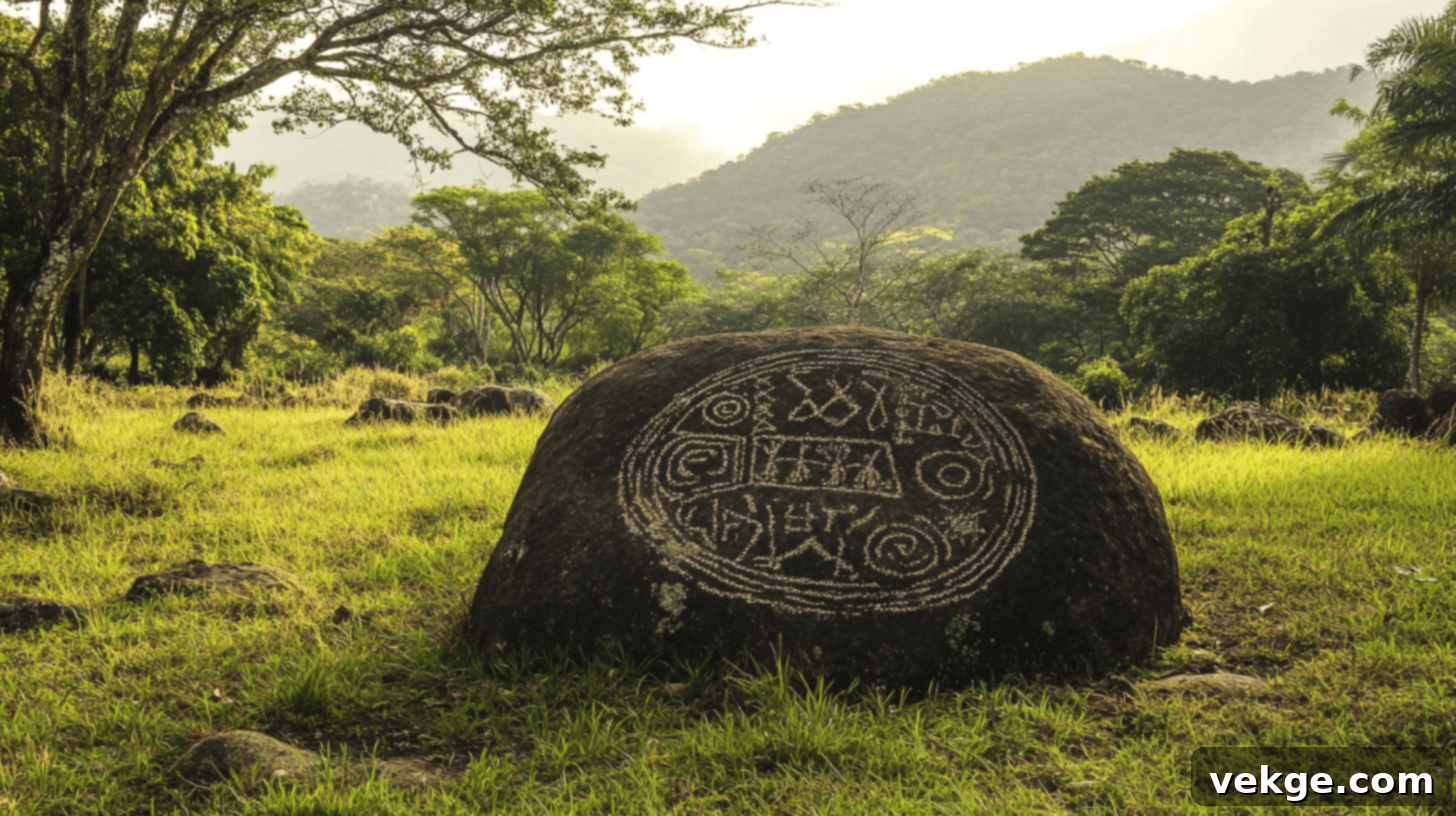
-
Importance: Vigirima is a significant archaeological site that offers a profound connection to Venezuela’s ancient past. It features an impressive collection of pre-Columbian petroglyphs and intricate stone arrangements, dating from approximately the 0th to the 7th century AD. These ancient markings and structures provide invaluable insights into the beliefs, daily lives, and artistic expressions of the indigenous cultures that thrived in the region centuries before European arrival, making it a crucial site for historical and cultural understanding.
-
When to Go: The dry season, spanning from December to April, offers the most favorable conditions for visiting Vigirima. During these months, site access is easier due to drier paths, and the clearer weather generally provides better viewing conditions for the outdoor petroglyphs.
-
Permits: A small entrance fee is typically payable at the site entrance of Vigirima. This fee contributes to the maintenance and protection of this valuable archaeological heritage site, ensuring its preservation for future generations.
-
Safety Tips: As Vigirima is largely an outdoor site with limited natural shade, it’s advisable to bring water and sun protection (hats, sunscreen). Some of the paths and areas around the petroglyphs can be uneven, so wearing appropriate and comfortable footwear is recommended to navigate the terrain safely.
26. Canaima Lagoon Falls (Hacha, Golondrina, Ucaima)
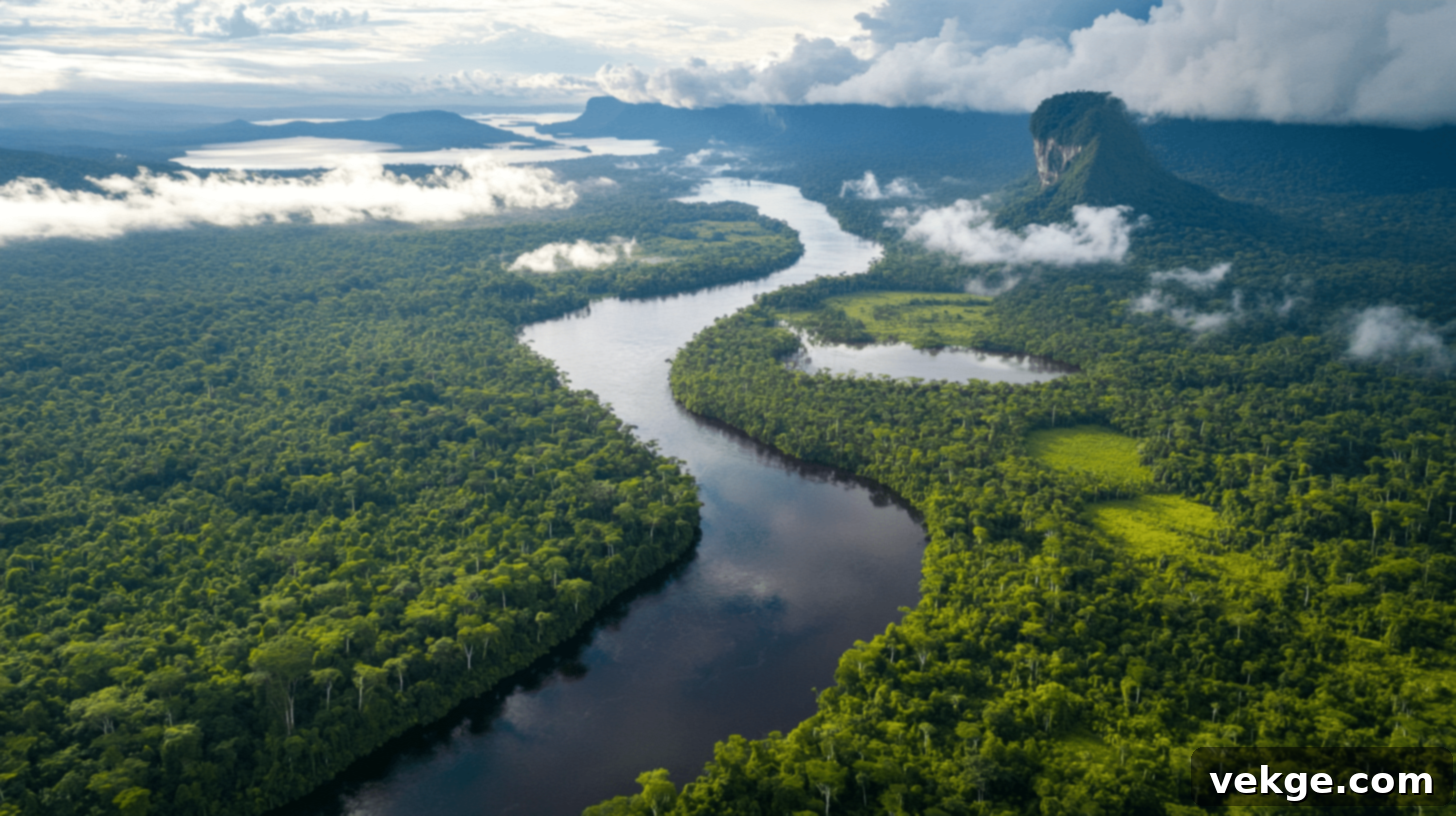
-
Importance: The Canaima Lagoon Falls refer to a magnificent group of waterfalls, including Hacha, Golondrina, and Ucaima, that majestically flow directly into the main Canaima Lagoon. This stunning convergence of powerful cascades and tranquil, reddish-hued waters creates one of Venezuela’s most iconic and photogenic landscapes. It serves as the primary base for exploring Canaima National Park and offers immediate access to breathtaking natural beauty, a true spectacle of water and light.
-
When to Go: These waterfalls are impressive throughout the year, captivating visitors with their constant flow and beauty. However, they are at their most powerful and voluminous during the rainy season, which typically runs from May to November, presenting an even more dramatic display of nature’s force.
-
Permits: Access to the Canaima Lagoon Falls is covered by the general Canaima National Park entrance fee, which is almost always included as part of comprehensive tour packages booked with authorized operators. This simplifies access for visitors exploring the region.
-
Safety Tips: While swimming is permitted and encouraged in designated areas of Canaima Lagoon, it is crucial to exercise caution. The currents near the base of the waterfalls can be surprisingly strong and dangerous. Always follow the instructions and guidance of your local tour guides regarding safe swimming zones and water conditions, ensuring a safe and enjoyable experience.
27. Mountain of Sorte (Montaña de Sorte)
-
Importance: The Mountain of Sorte, located in Yaracuy state, holds profound spiritual and cultural significance as the main pilgrimage site for followers of María Lionza. This unique Venezuelan syncretic religion intricately blends indigenous spiritual beliefs, African traditions brought by enslaved people, and elements of Catholic faith. The mountain is considered a sacred place where spirits and deities, led by the goddess María Lionza, reside and are invoked, making it a vibrant center for spiritual practices and rituals that define a crucial aspect of Venezuelan popular culture.
-
When to Go: While spiritual practices and pilgrimages occur year-round, October 12th marks the largest annual gathering, drawing thousands of devotees for elaborate ceremonies and celebrations. Weekends generally see more activity, offering visitors a chance to witness various rituals and a deeper immersion into the local spiritual life.
-
Permits: No special permits are required to visit the Mountain of Sorte. However, as it is an active and deeply revered religious site, respectful behavior and appropriate conduct are absolutely expected from all visitors. Observance and reverence for the ongoing ceremonies are paramount.
-
Safety Tips: It is essential to observe ceremonies and spiritual practices respectfully, refraining from photographing without explicit permission, as this can be considered intrusive. Visiting with a local guide who is familiar with the customs, protocols, and appropriate behavior at ritual sites is highly recommended to ensure a respectful and insightful experience, as well as to navigate the site effectively.
Wrapping Up Your Venezuelan Adventure
Venezuela is a land of extraordinary contrasts and unparalleled natural beauty, offering a diverse palette of experiences for every type of traveler. From the thundering power of Angel Falls to the ancient mysteries of Mount Roraima and the serene beauty of the Los Roques archipelago, its landmarks tell a story of geological wonder, vibrant ecosystems, and rich cultural heritage.
As you plan your journey, remember that while most sites are ideally visited during the dry season (December-April) for ease of access and pleasant weather, the majestic waterfalls often reveal their full, untamed power during the rainy months. Almost all locations, particularly the more remote natural wonders, necessitate the accompaniment of knowledgeable local guides – not just for navigating permit requirements, but crucially for ensuring your safety, providing invaluable cultural understanding, and respecting indigenous traditions and territories.
While some of Venezuela’s cherished landmarks warmly welcome casual visitors, others, due to their delicate ecosystems or extreme remoteness, remain largely accessible only to specialized scientific expeditions. This tiered access ensures the preservation of its most fragile and untouched treasures.
With proper planning, an adventurous spirit, and a deep respect for local customs and the pristine environment, a journey through these incredible places offers unforgettable glimpses into our planet’s natural history and the enduring spirit of Venezuela. Prepare to be amazed and inspired by a country that truly embodies the term “natural wonder.”
For more insightful travel blogs and guides to breathtaking destinations, don’t forget to visit our website!
